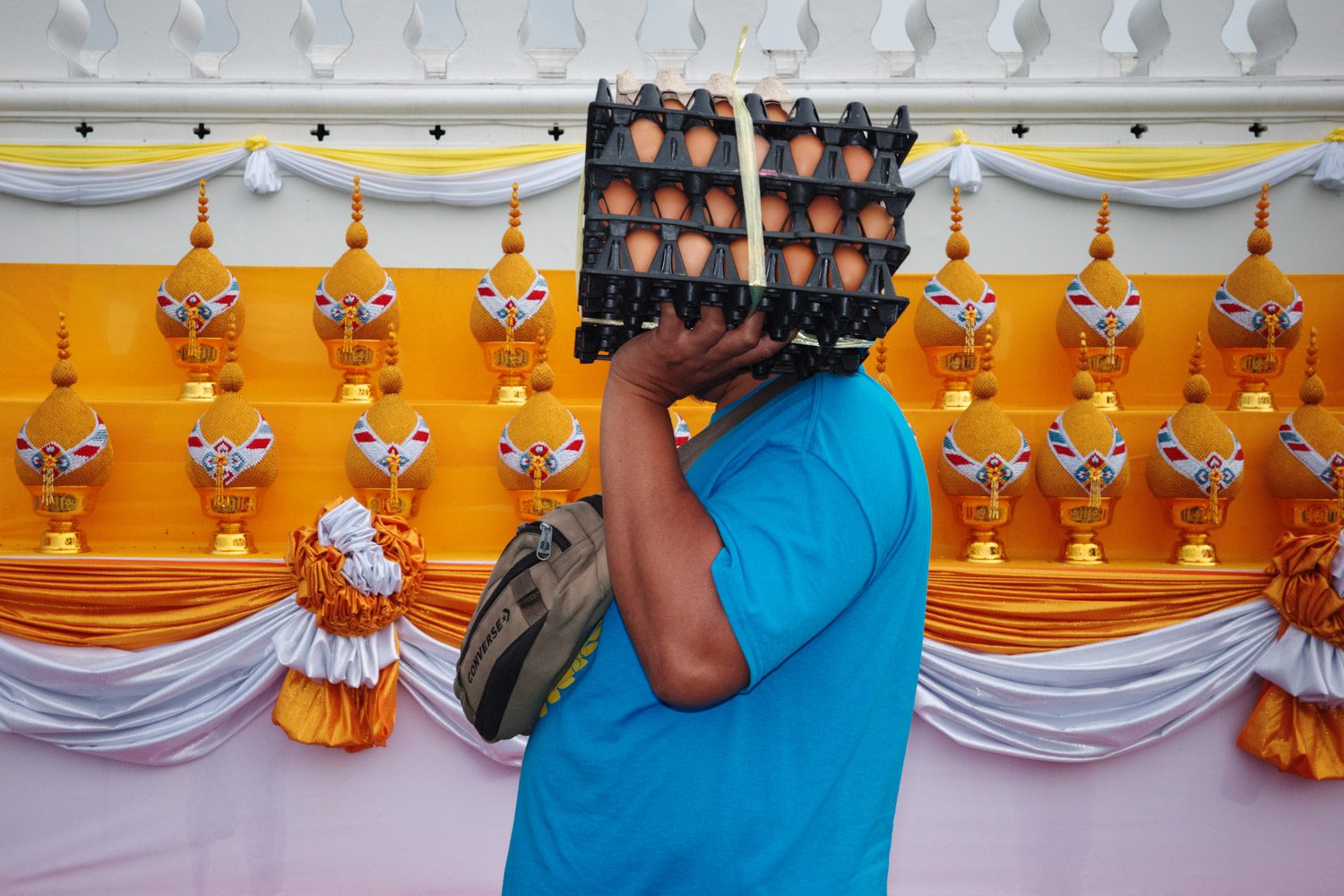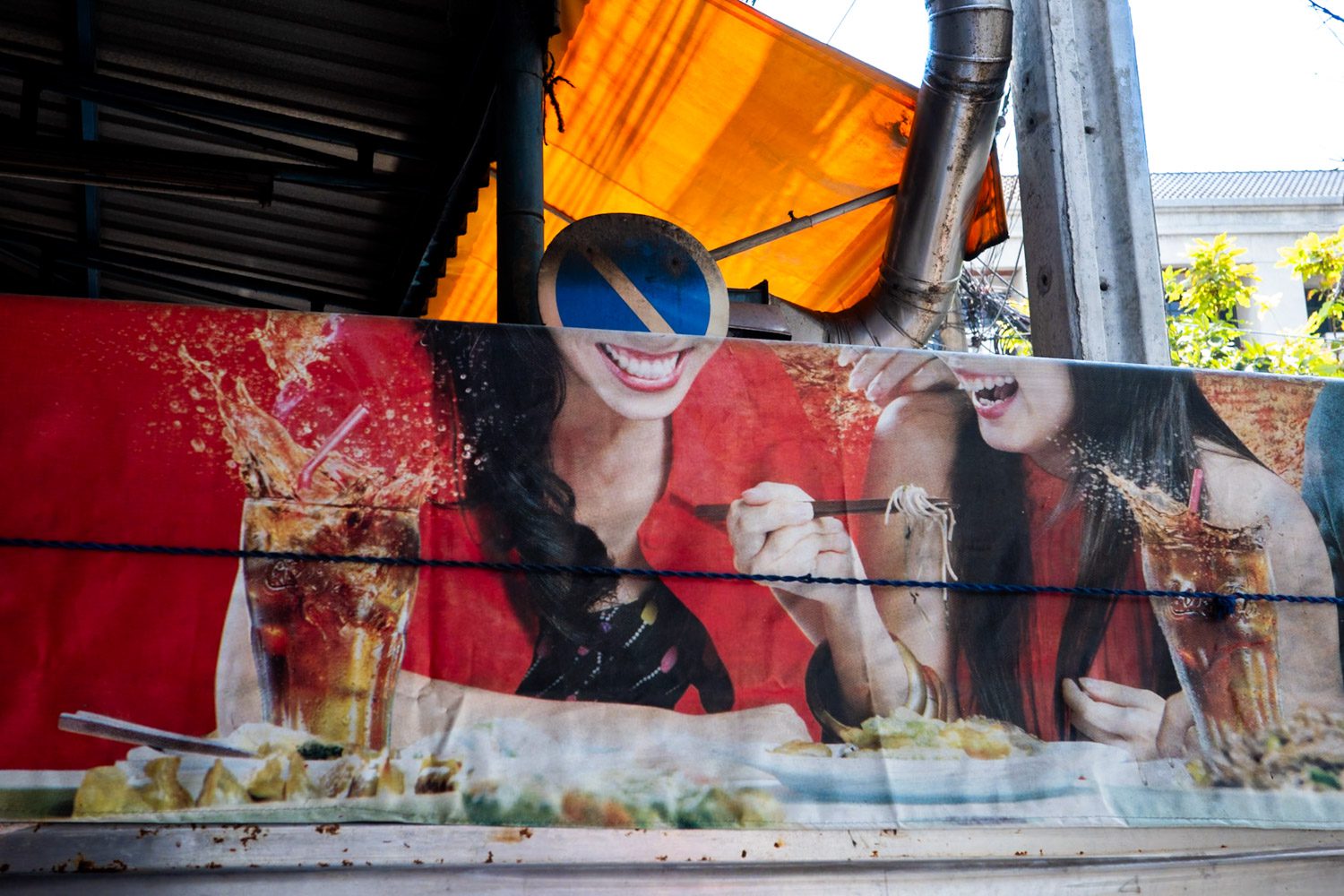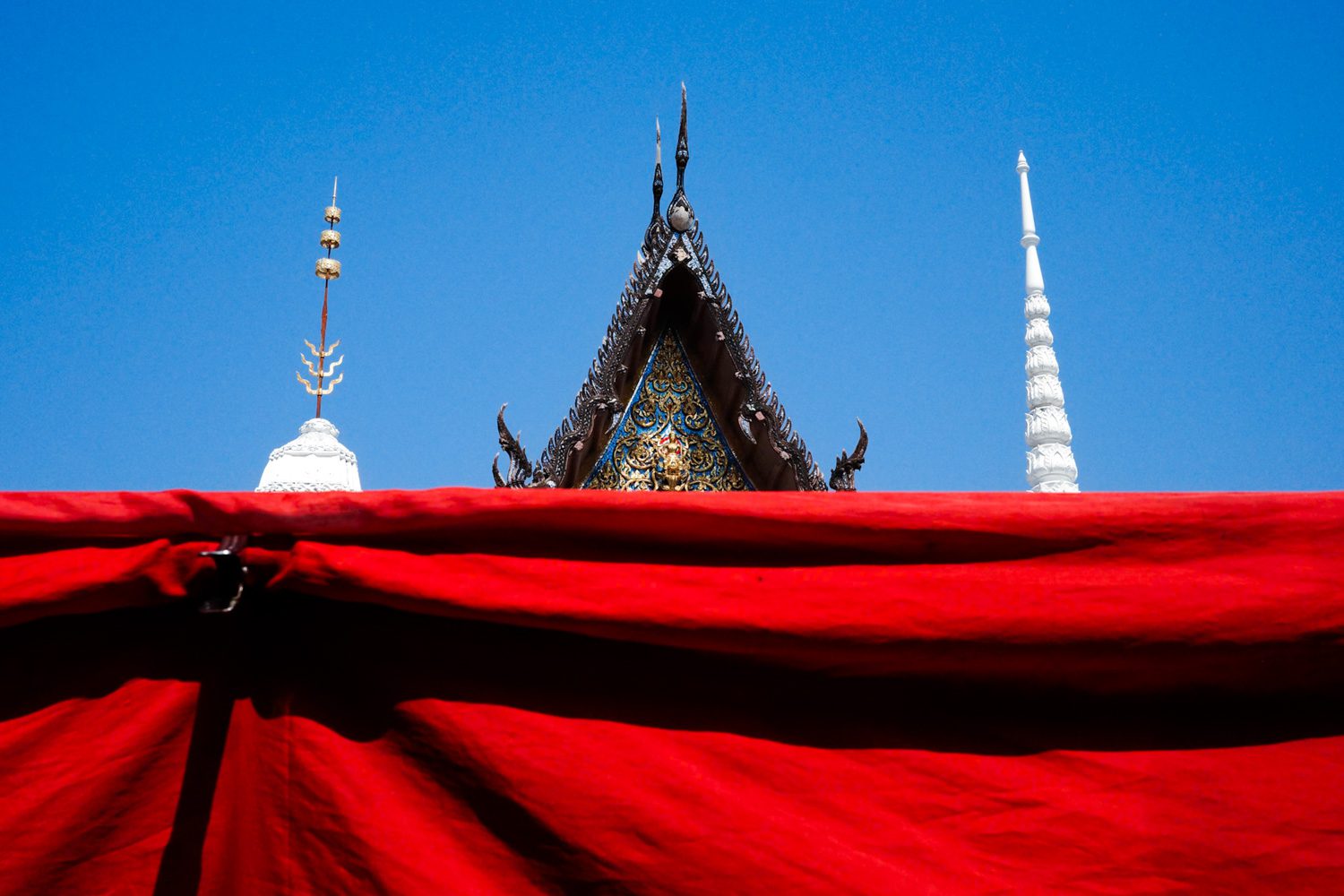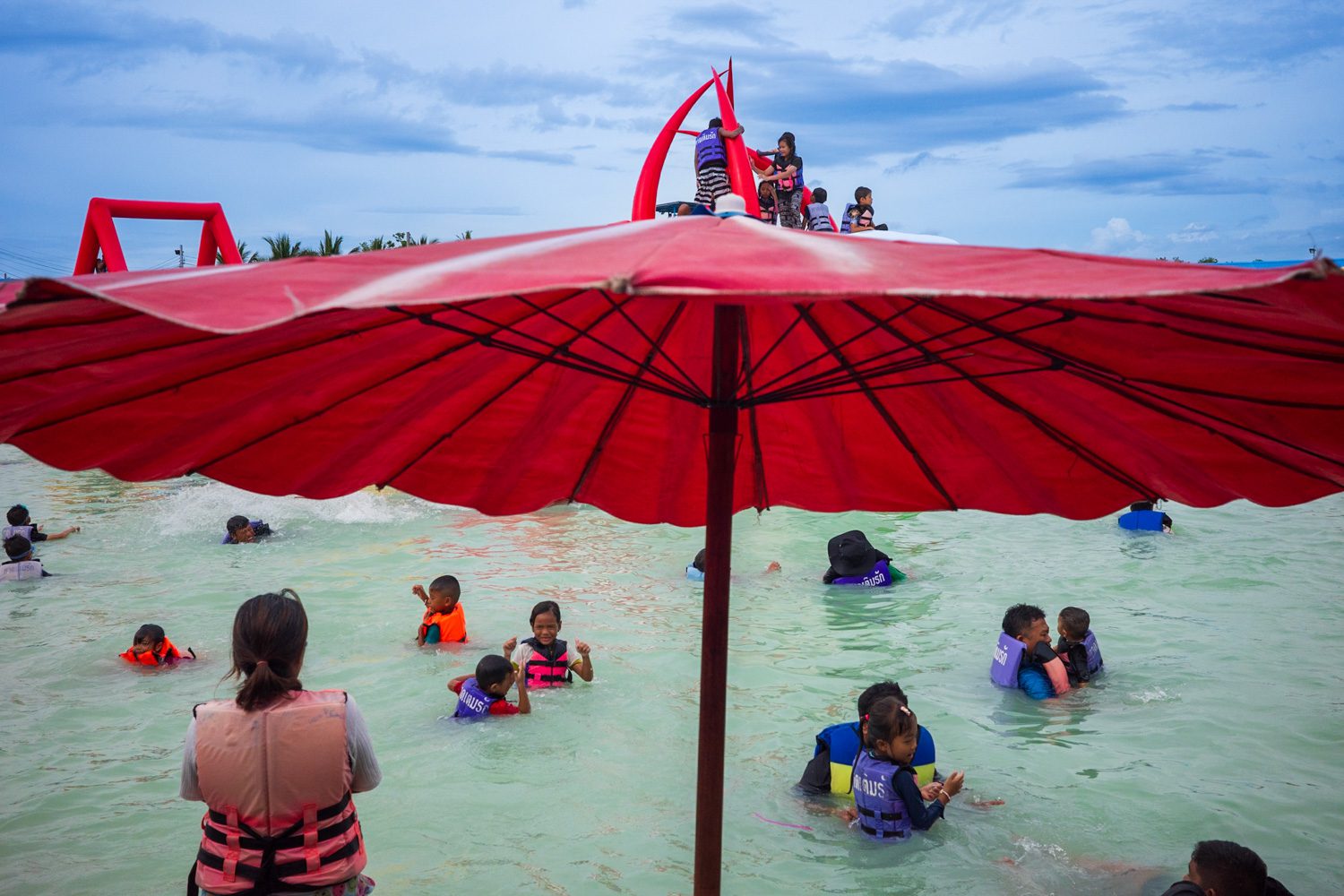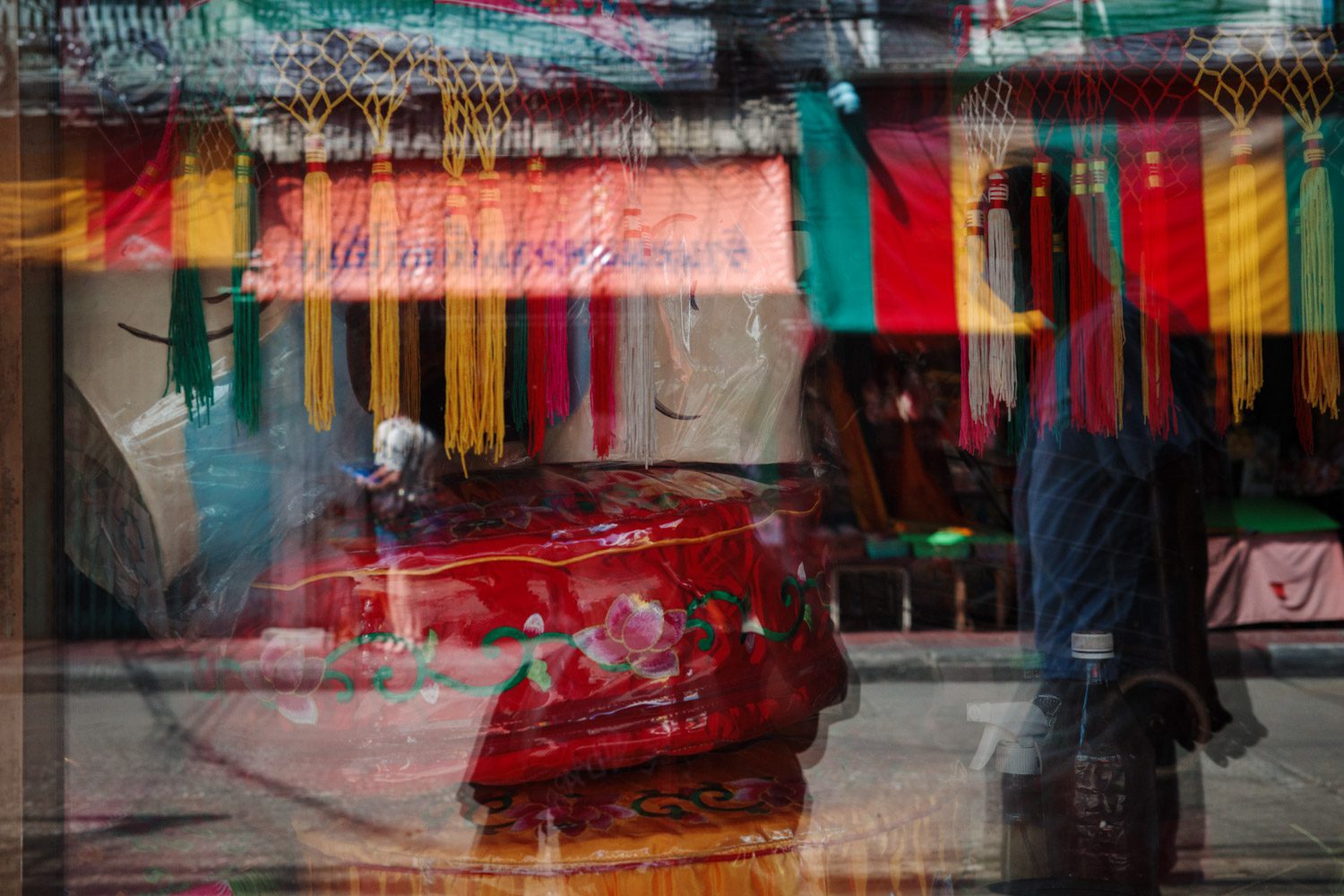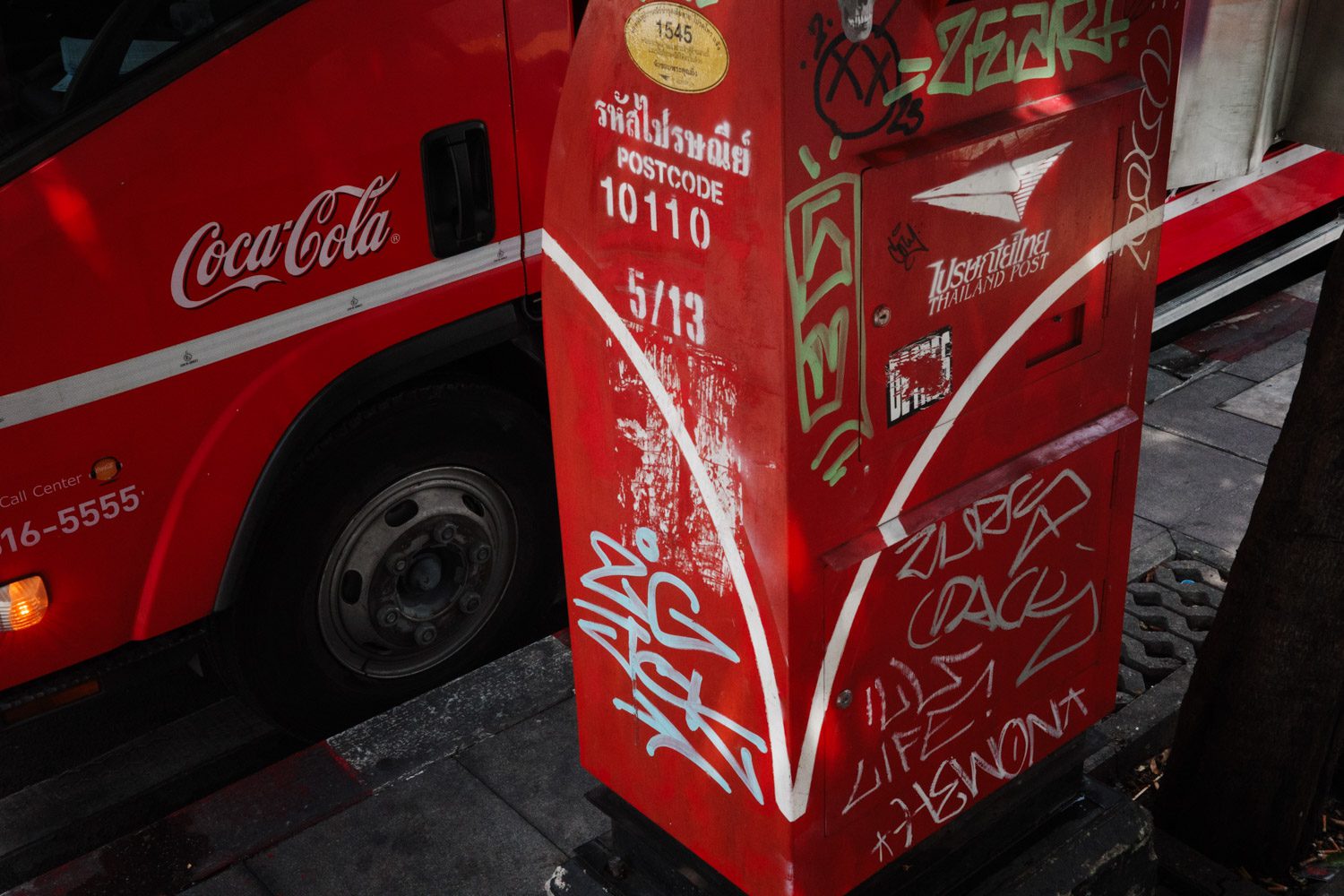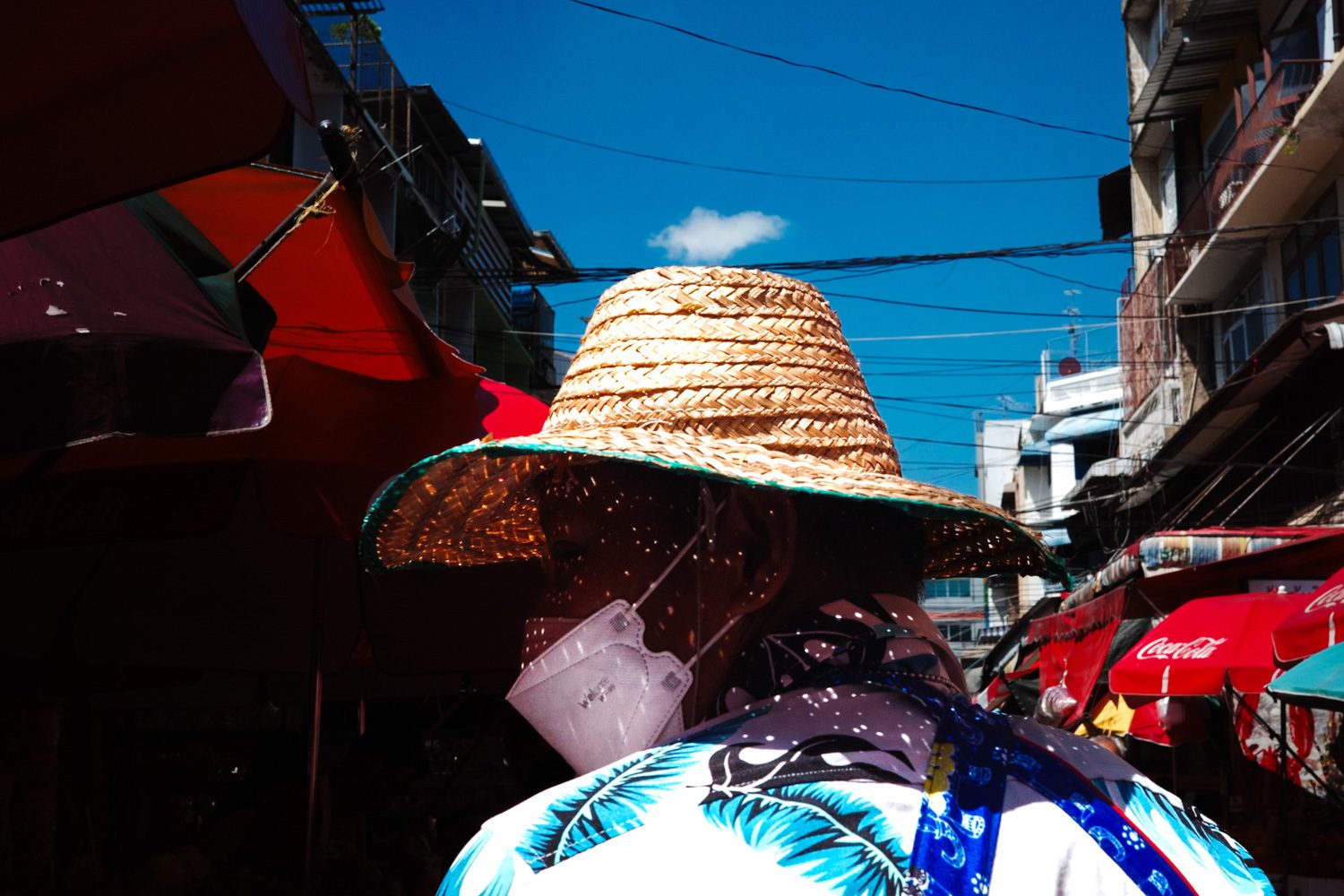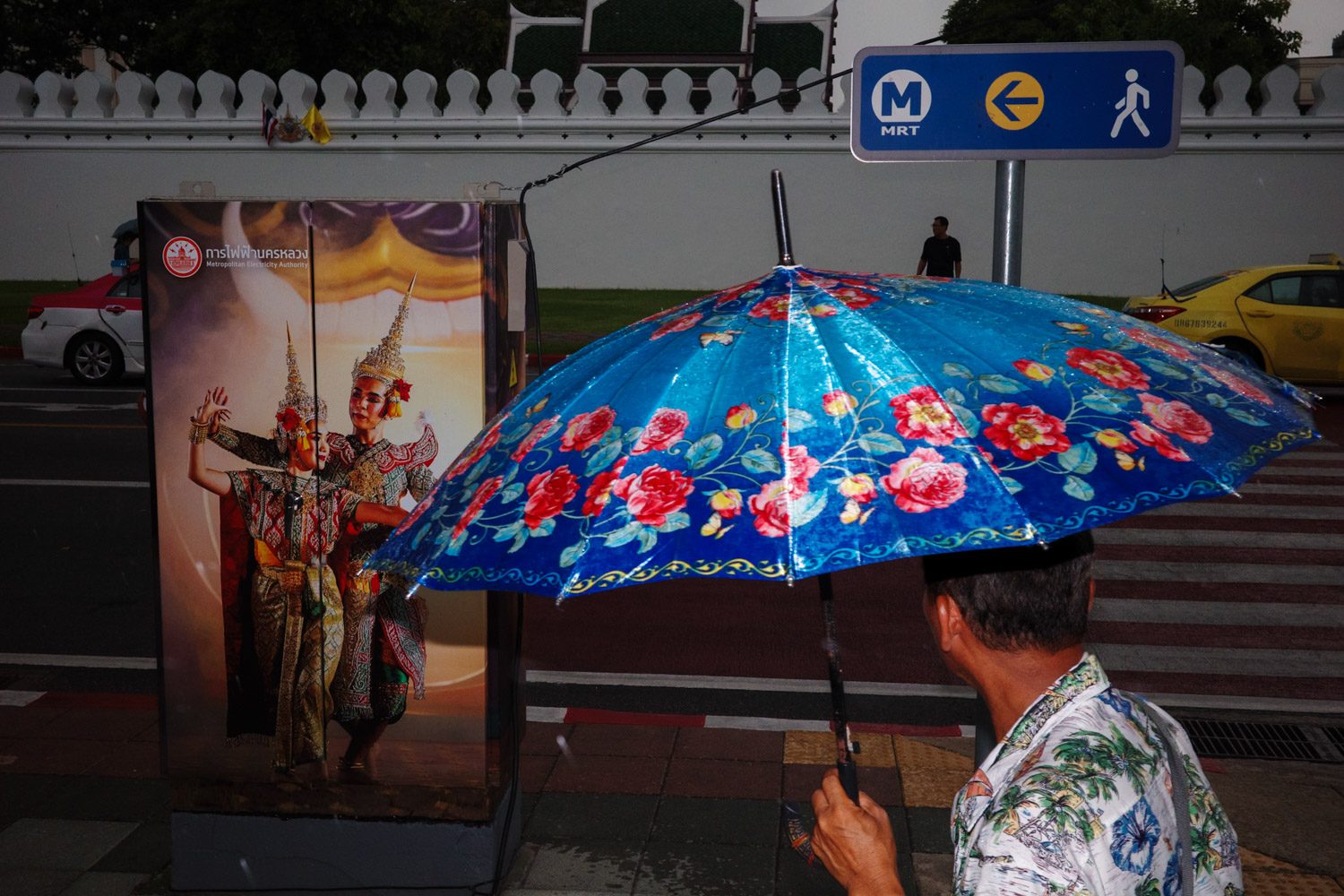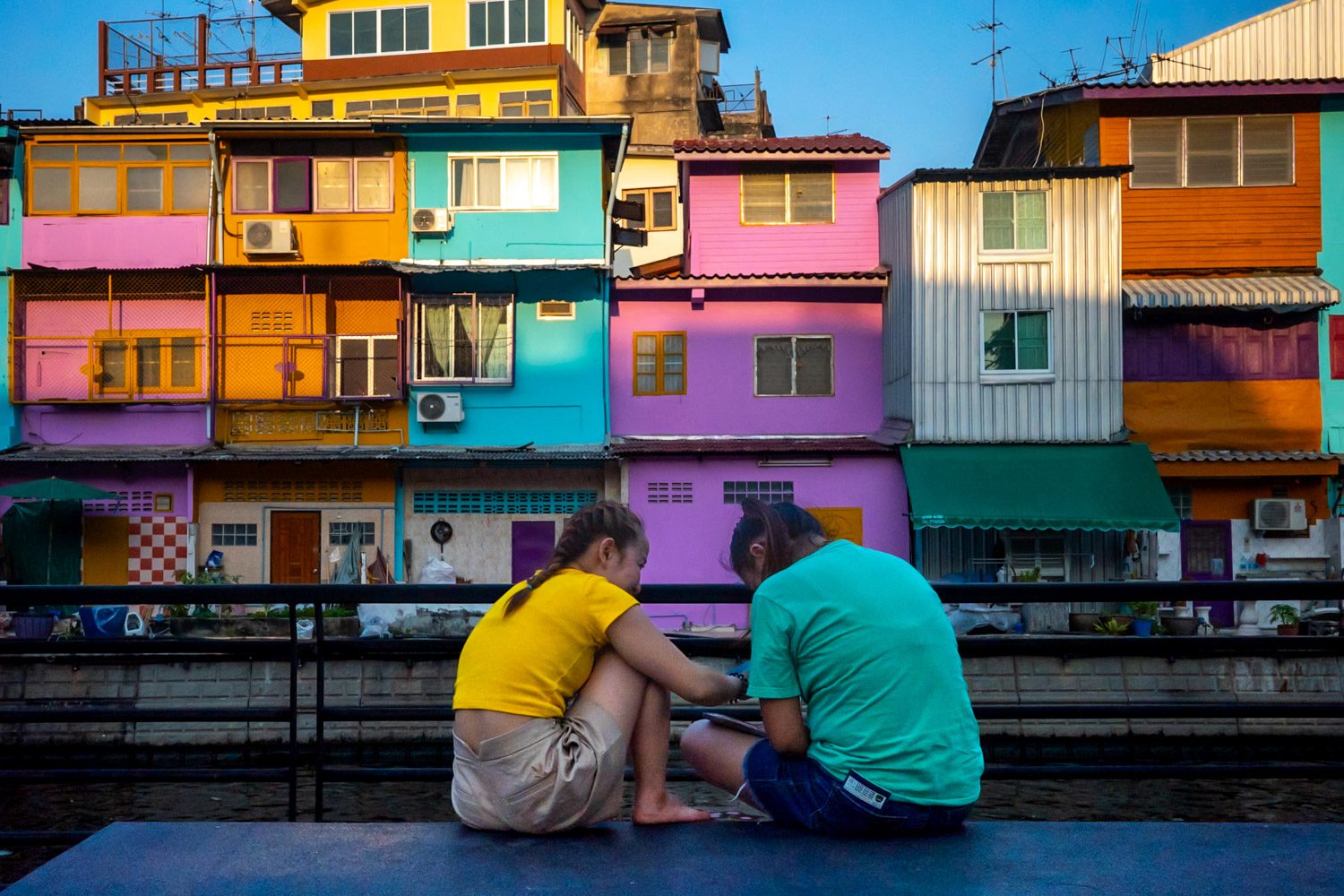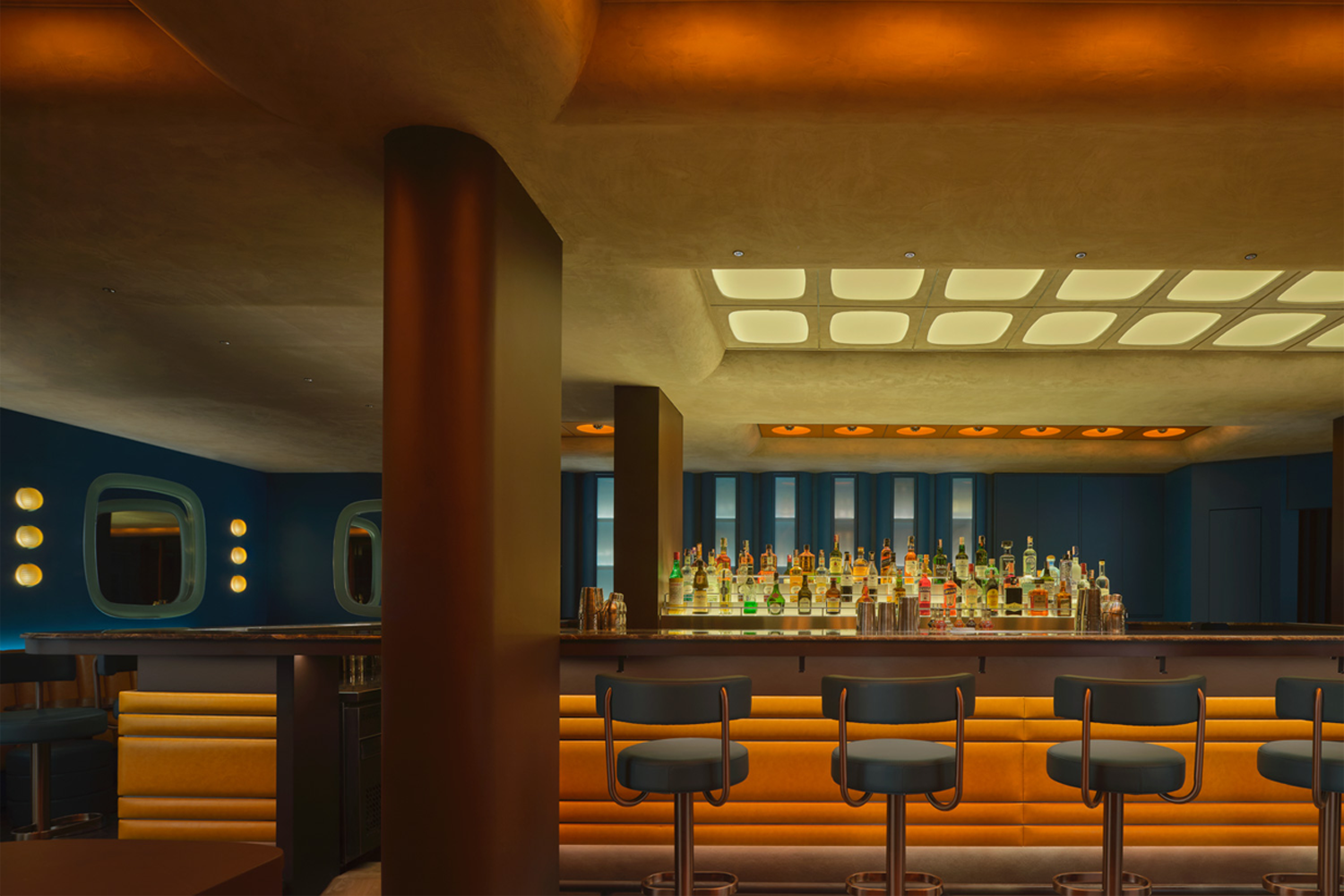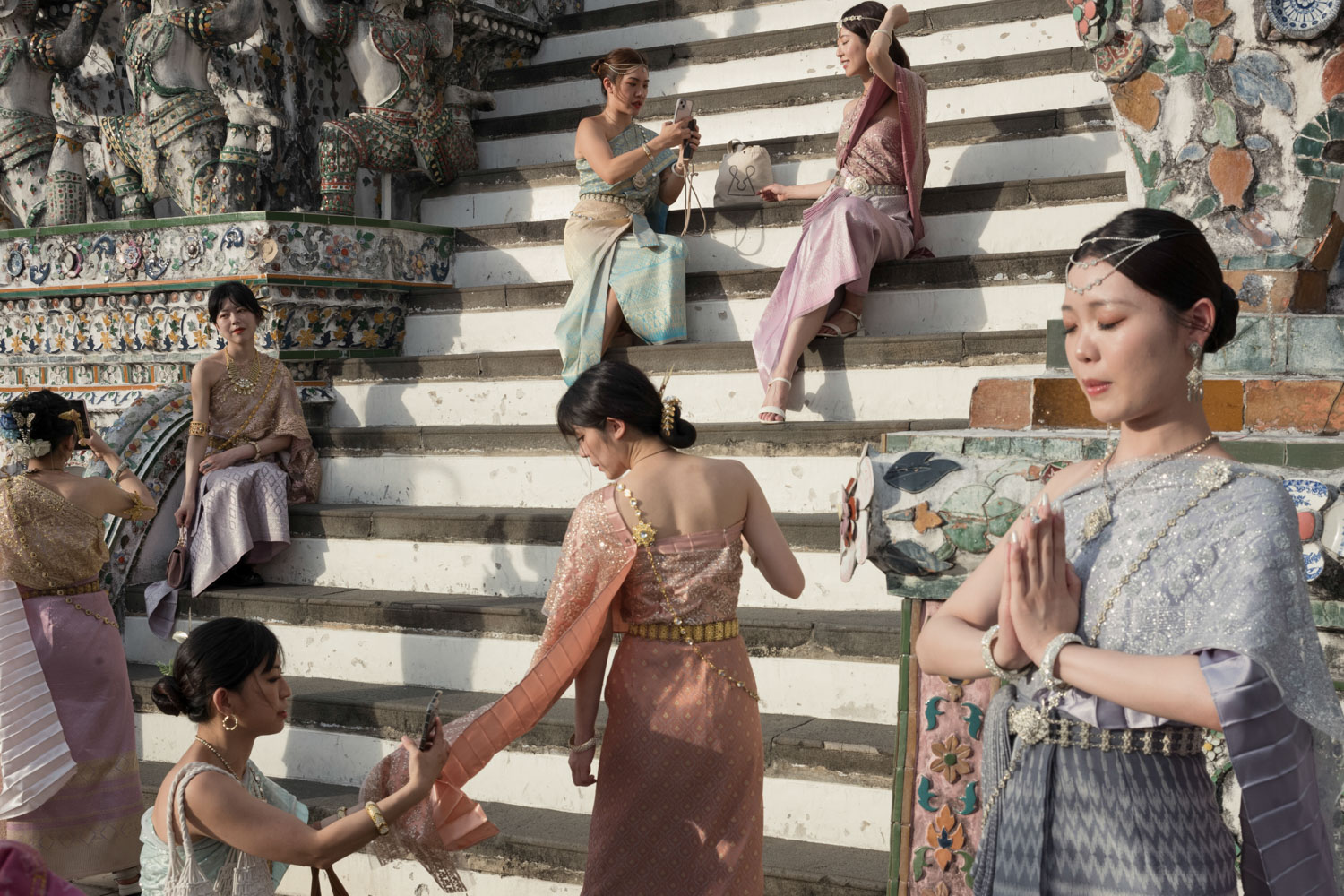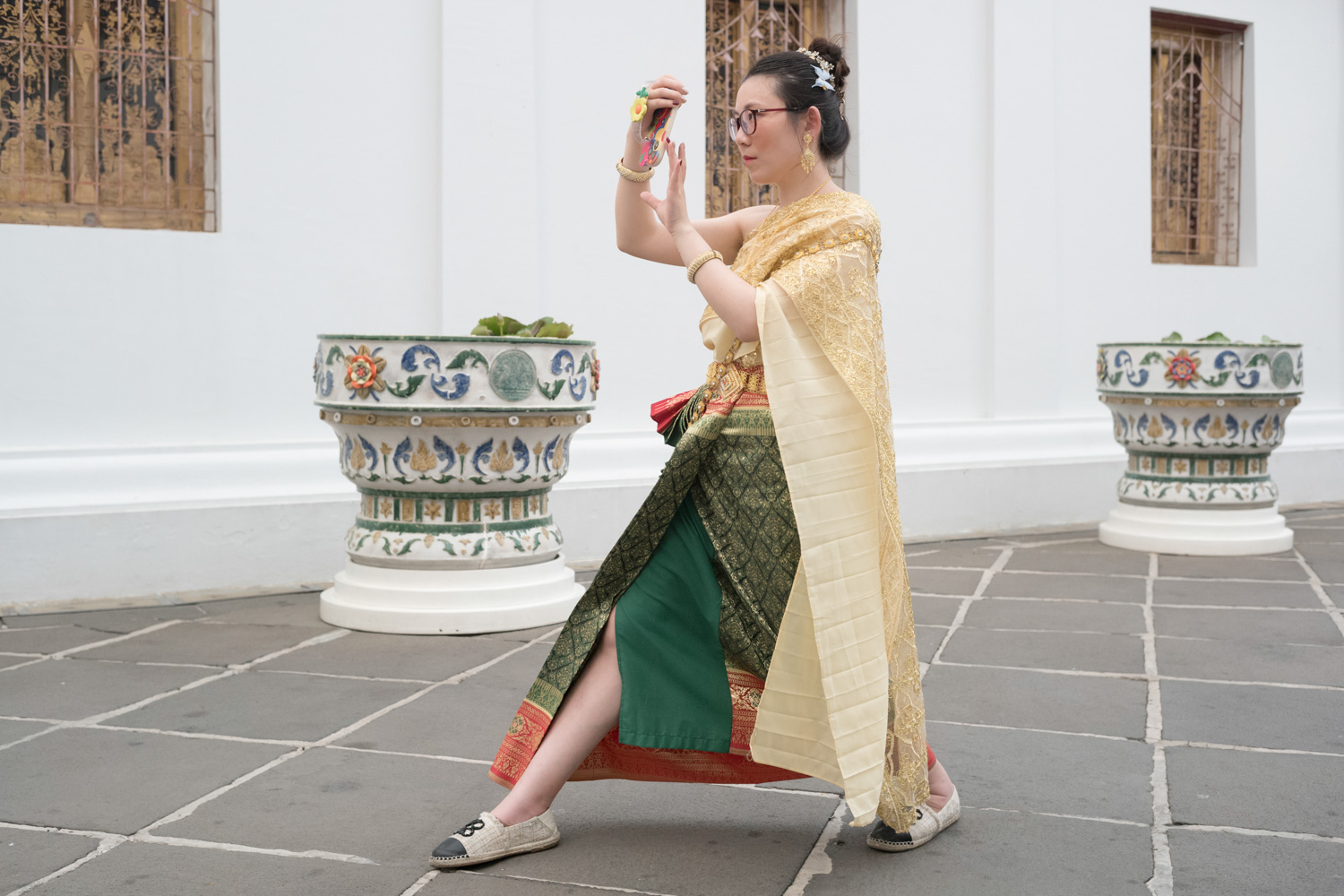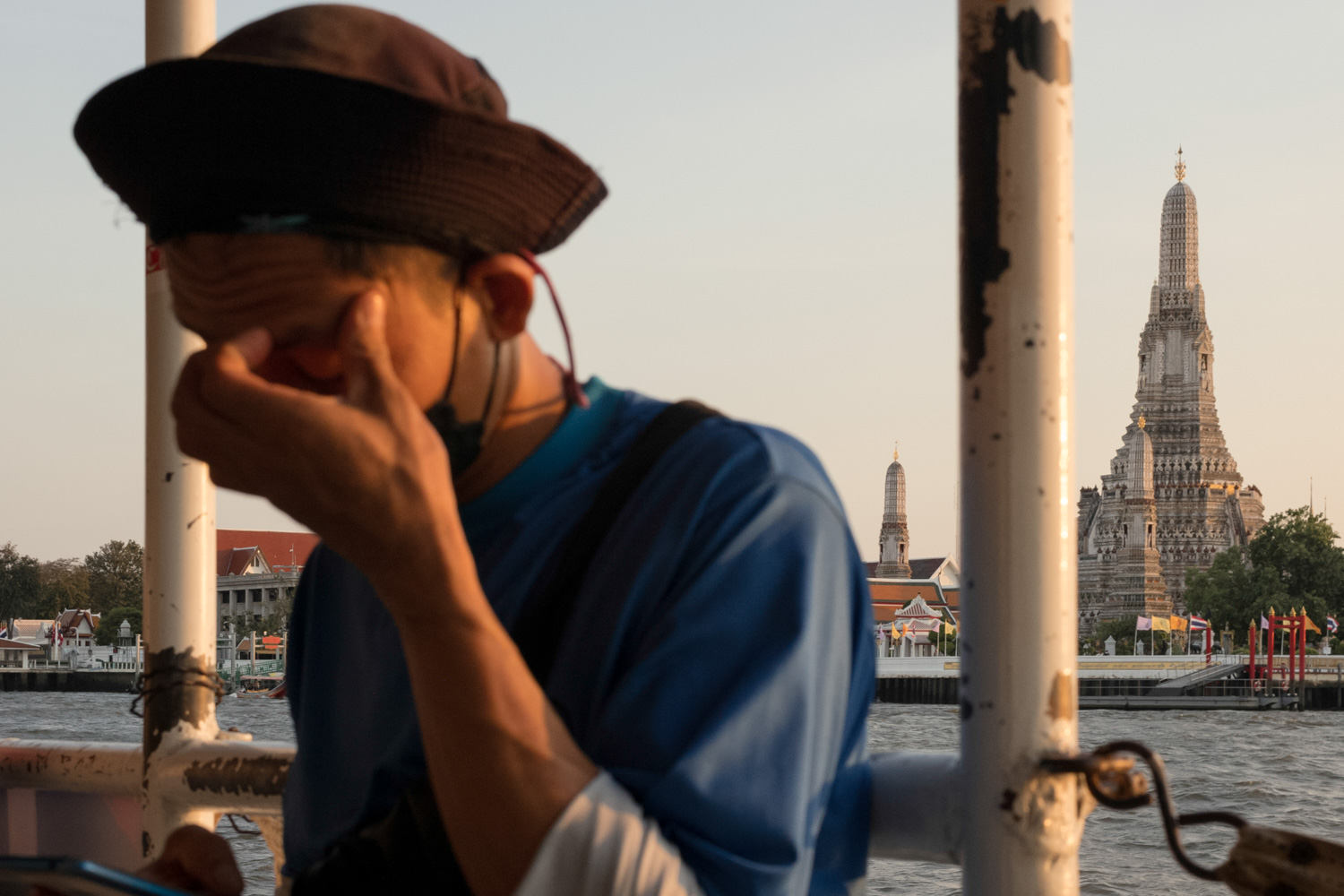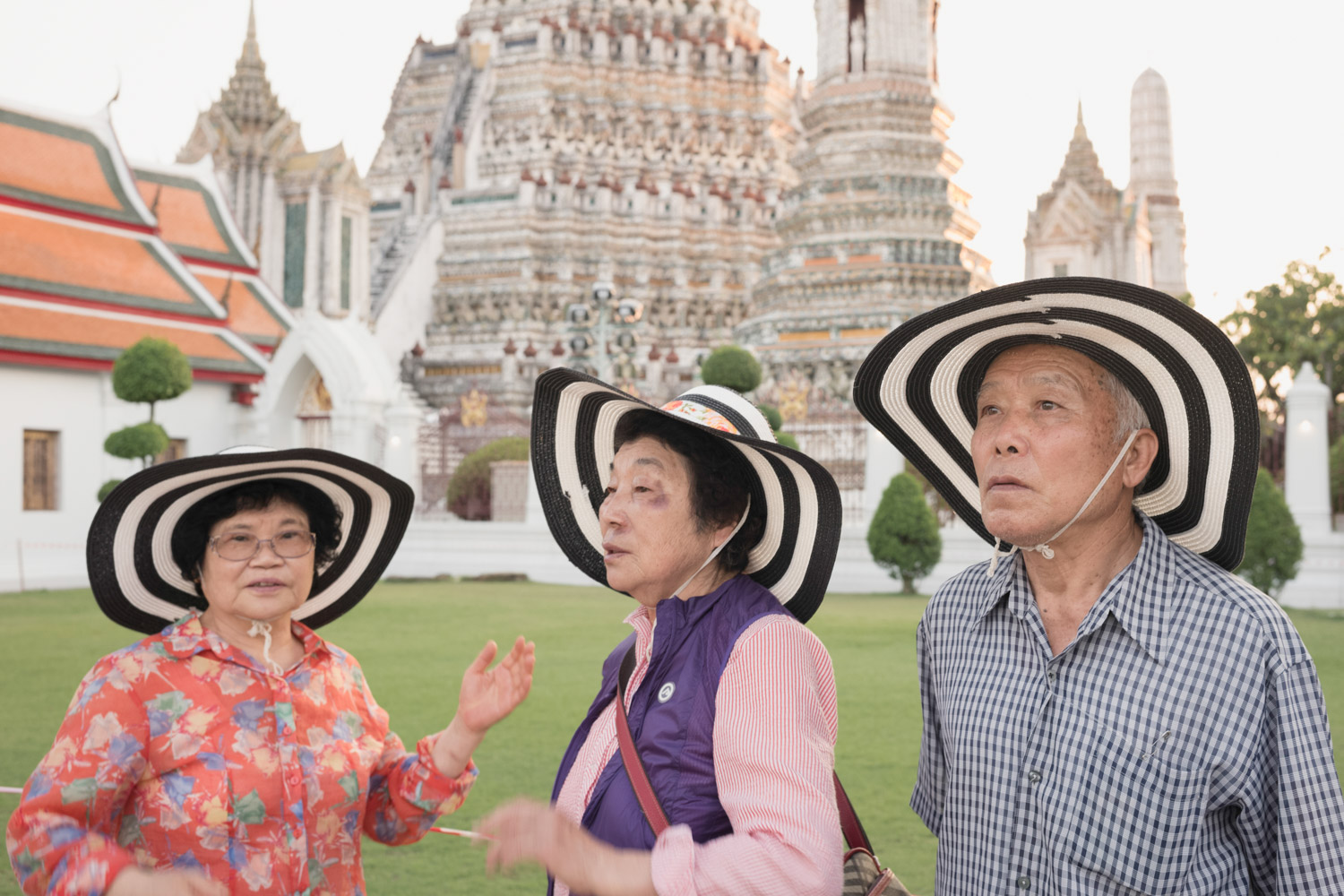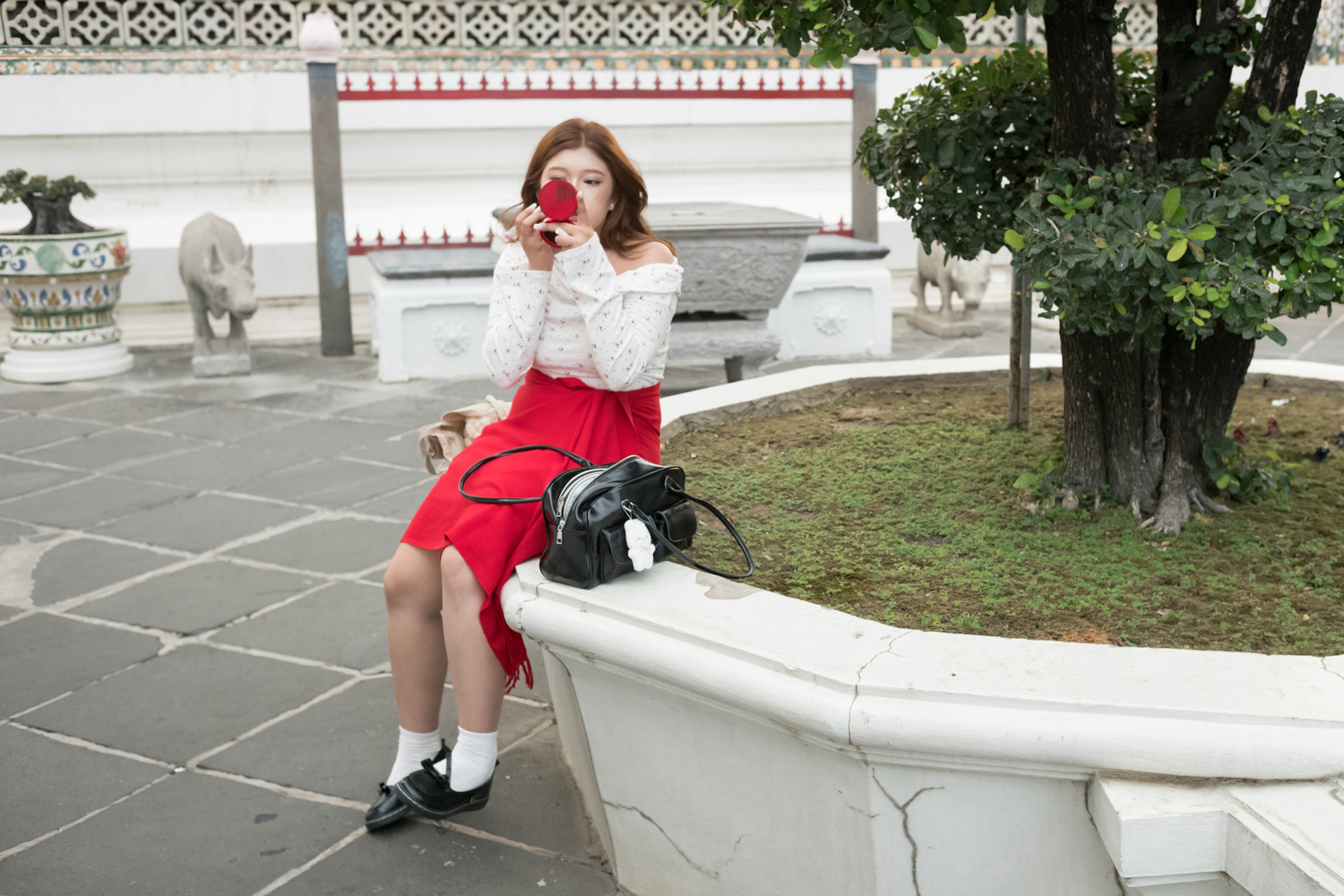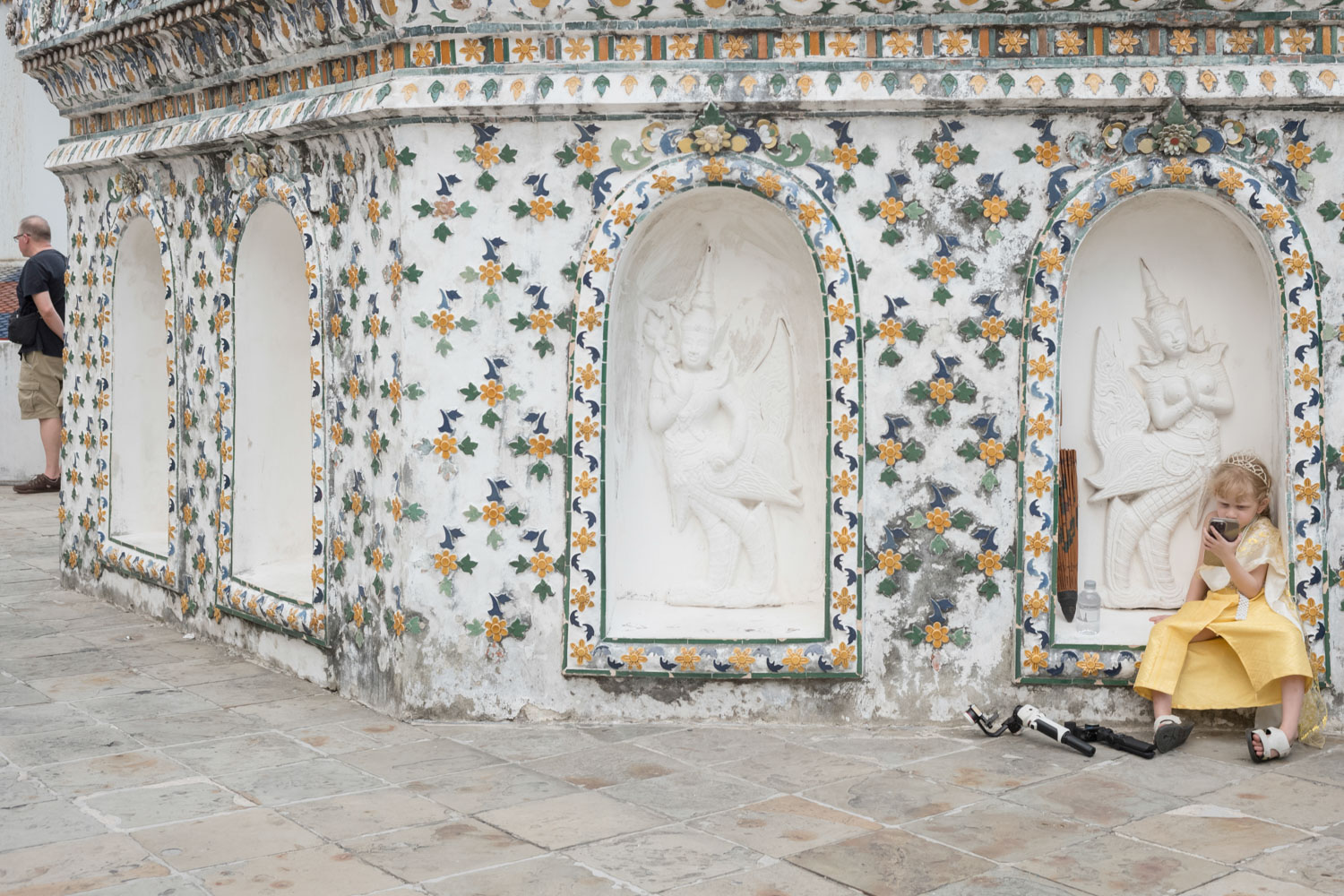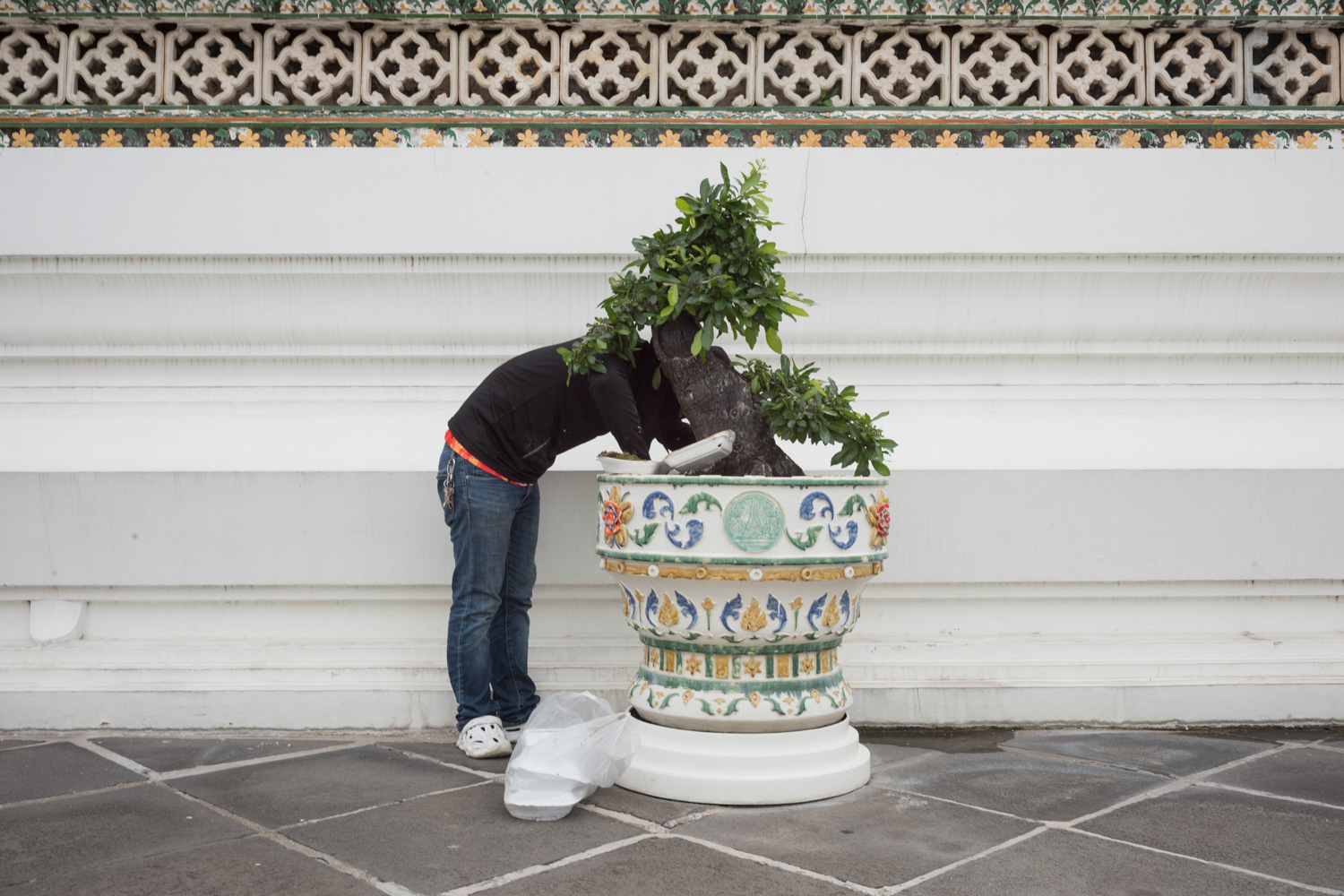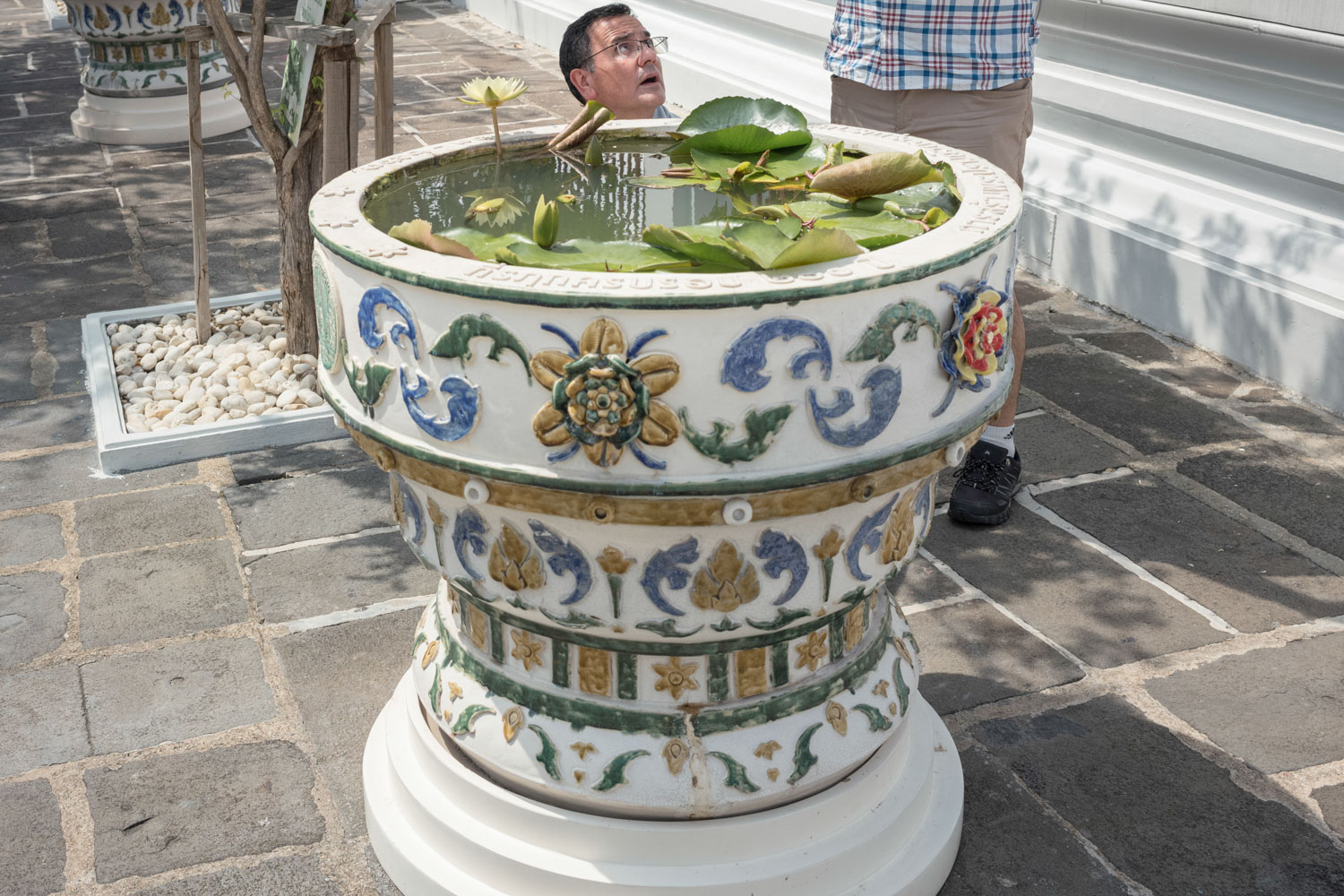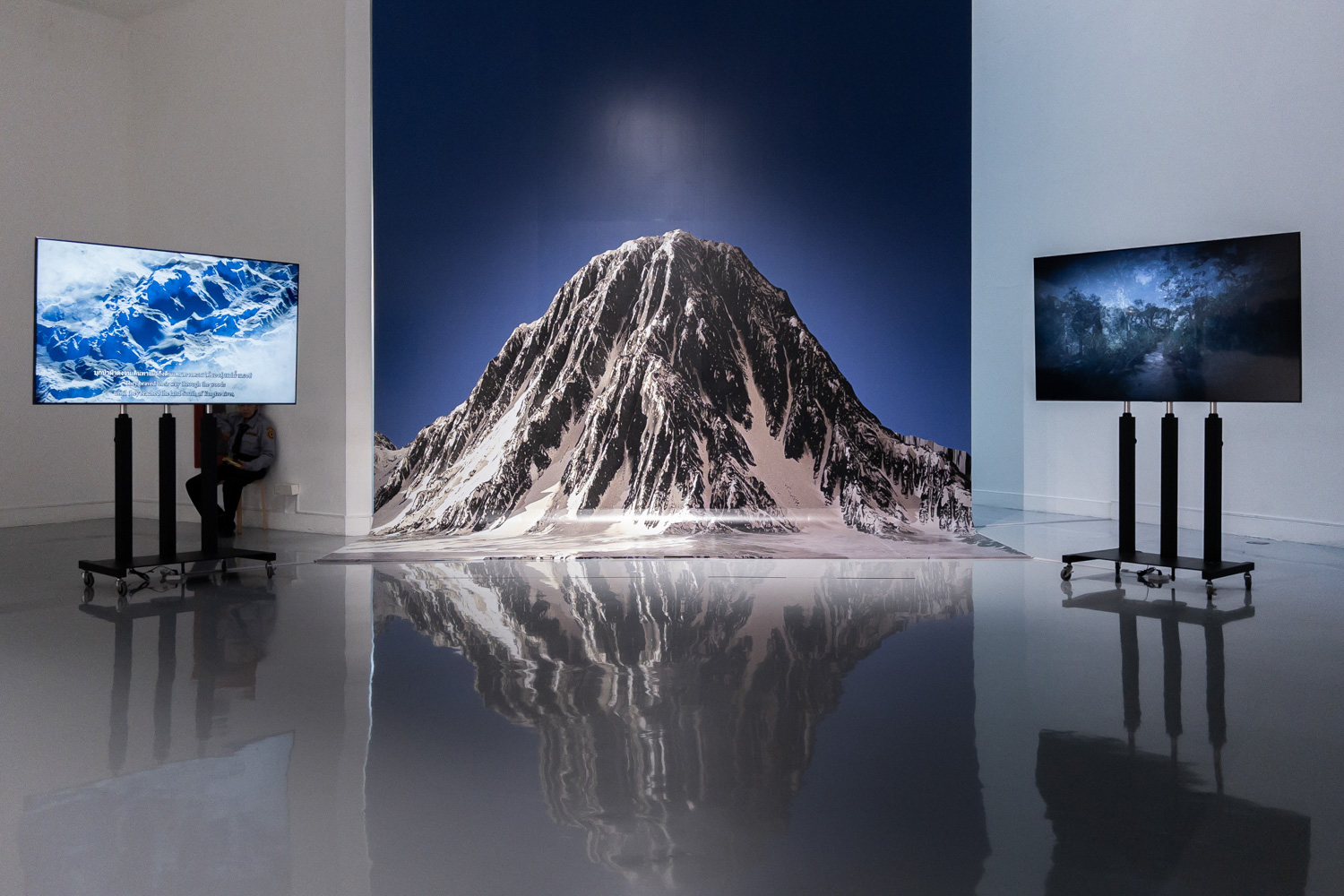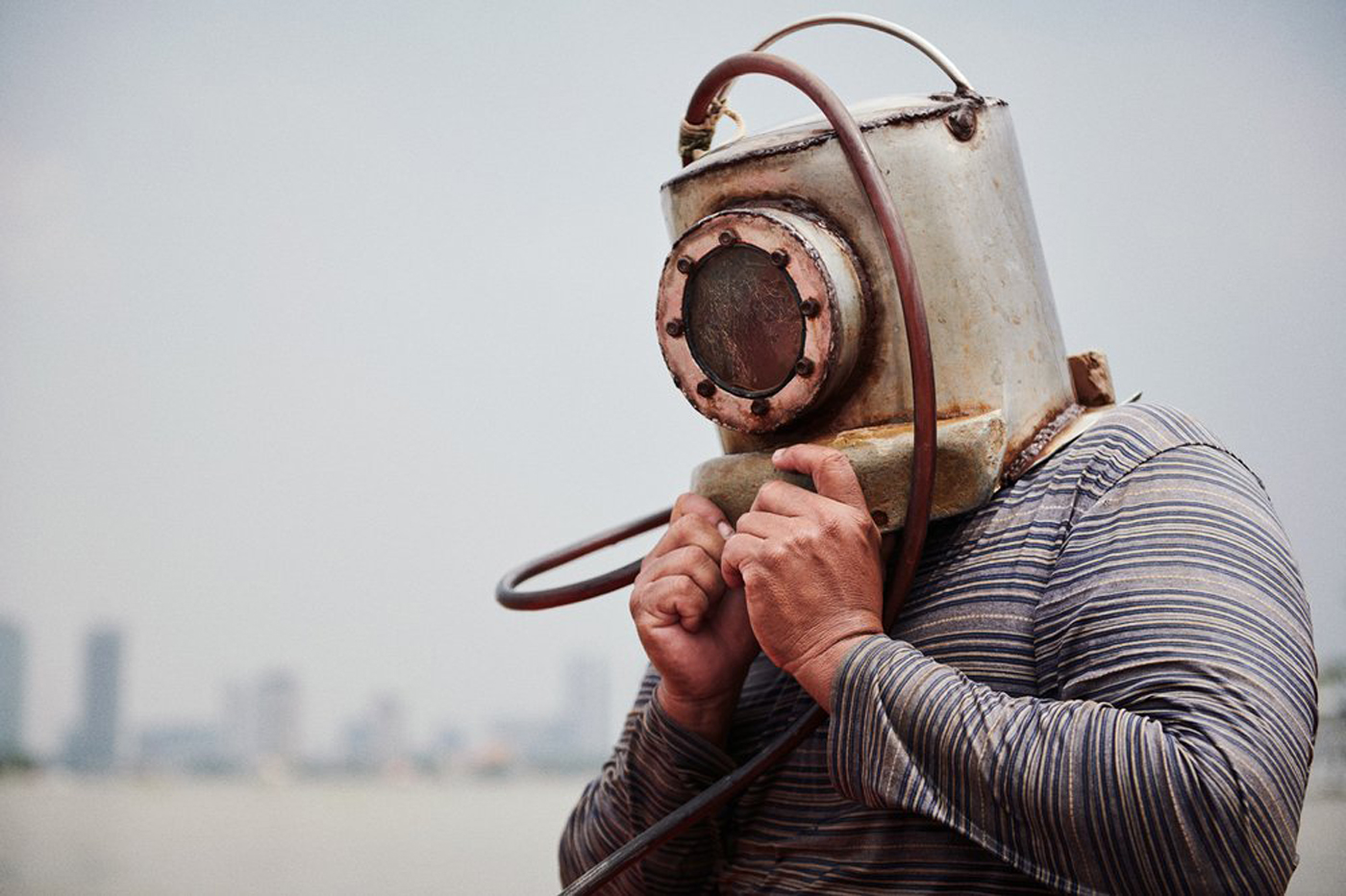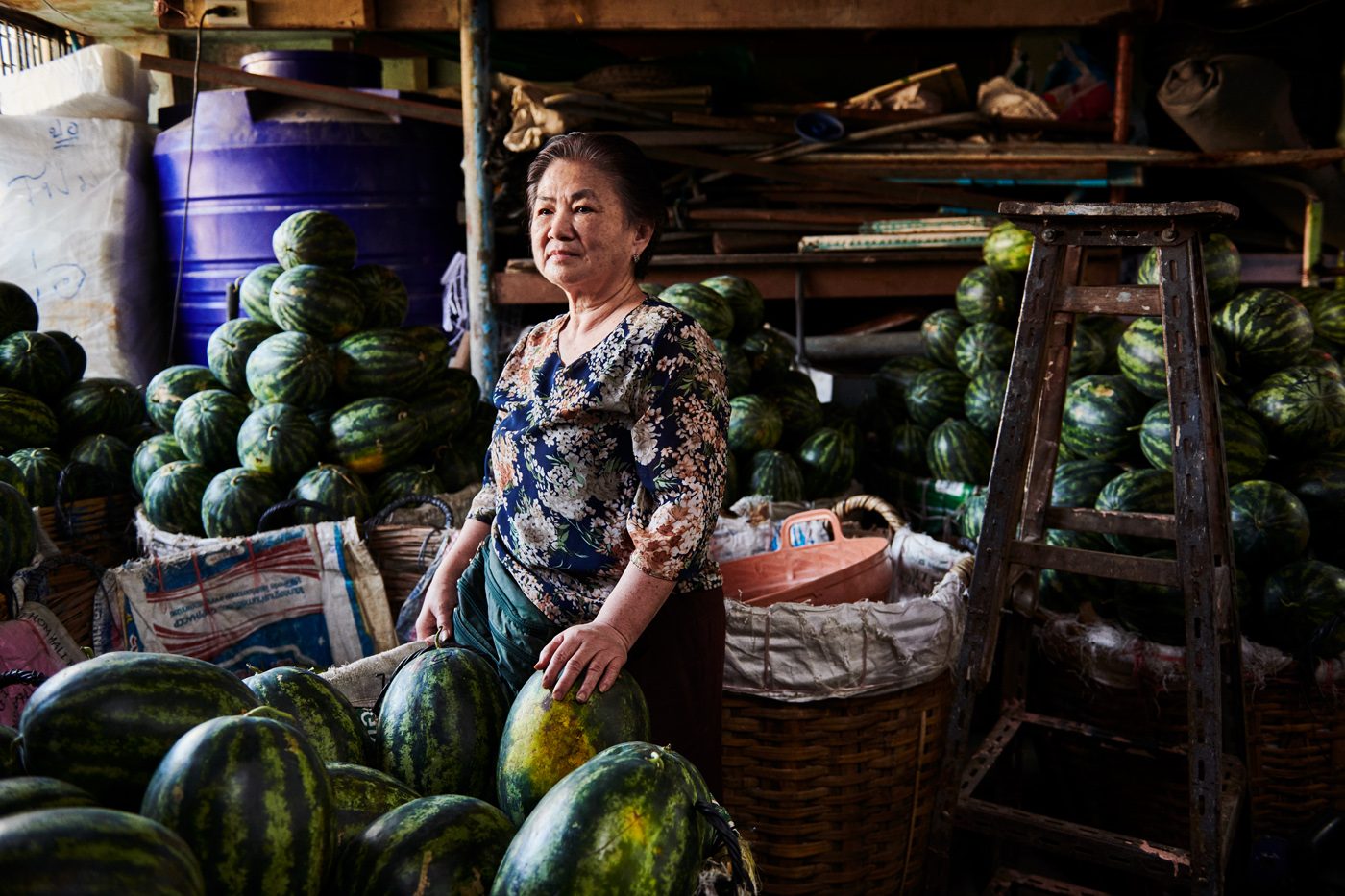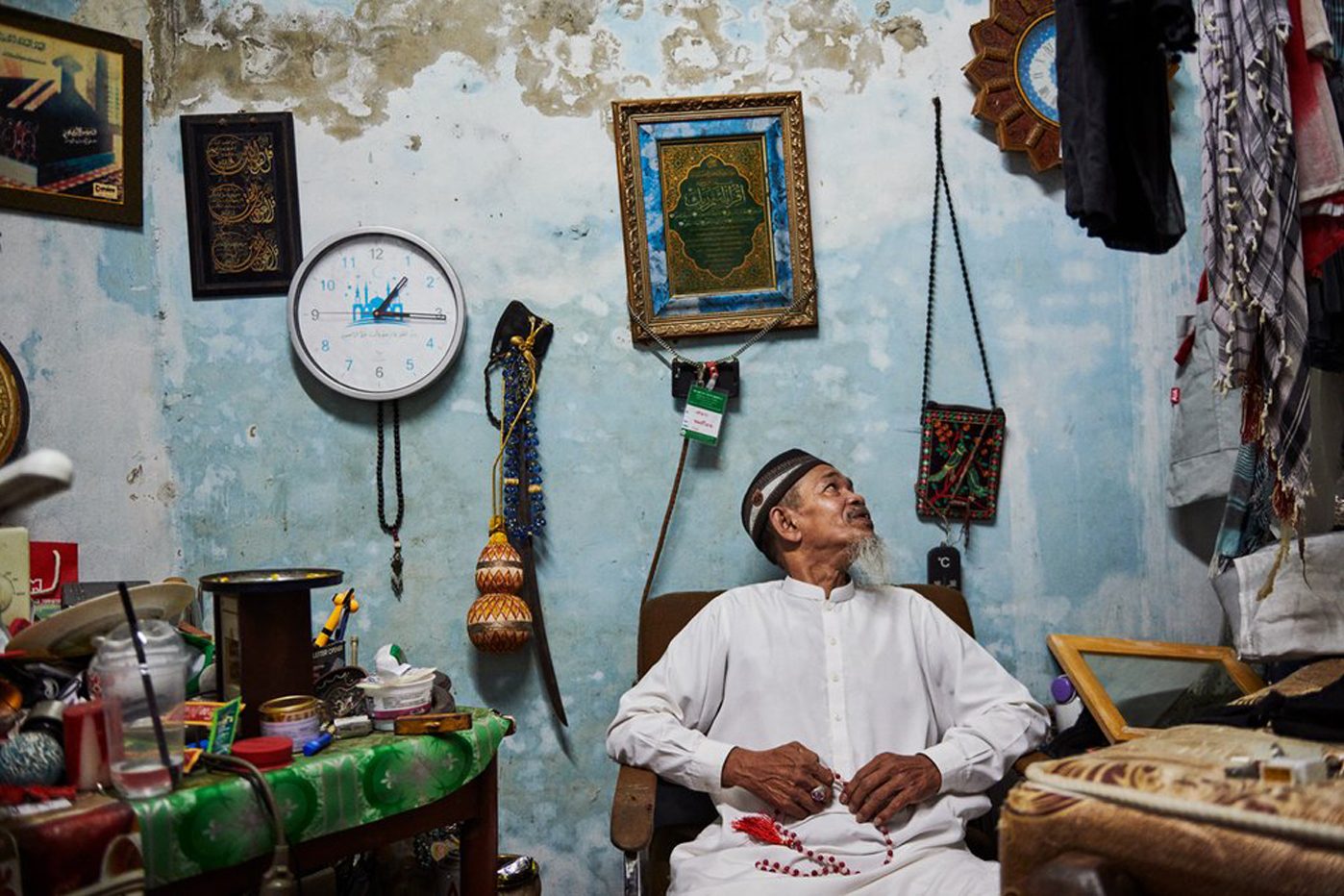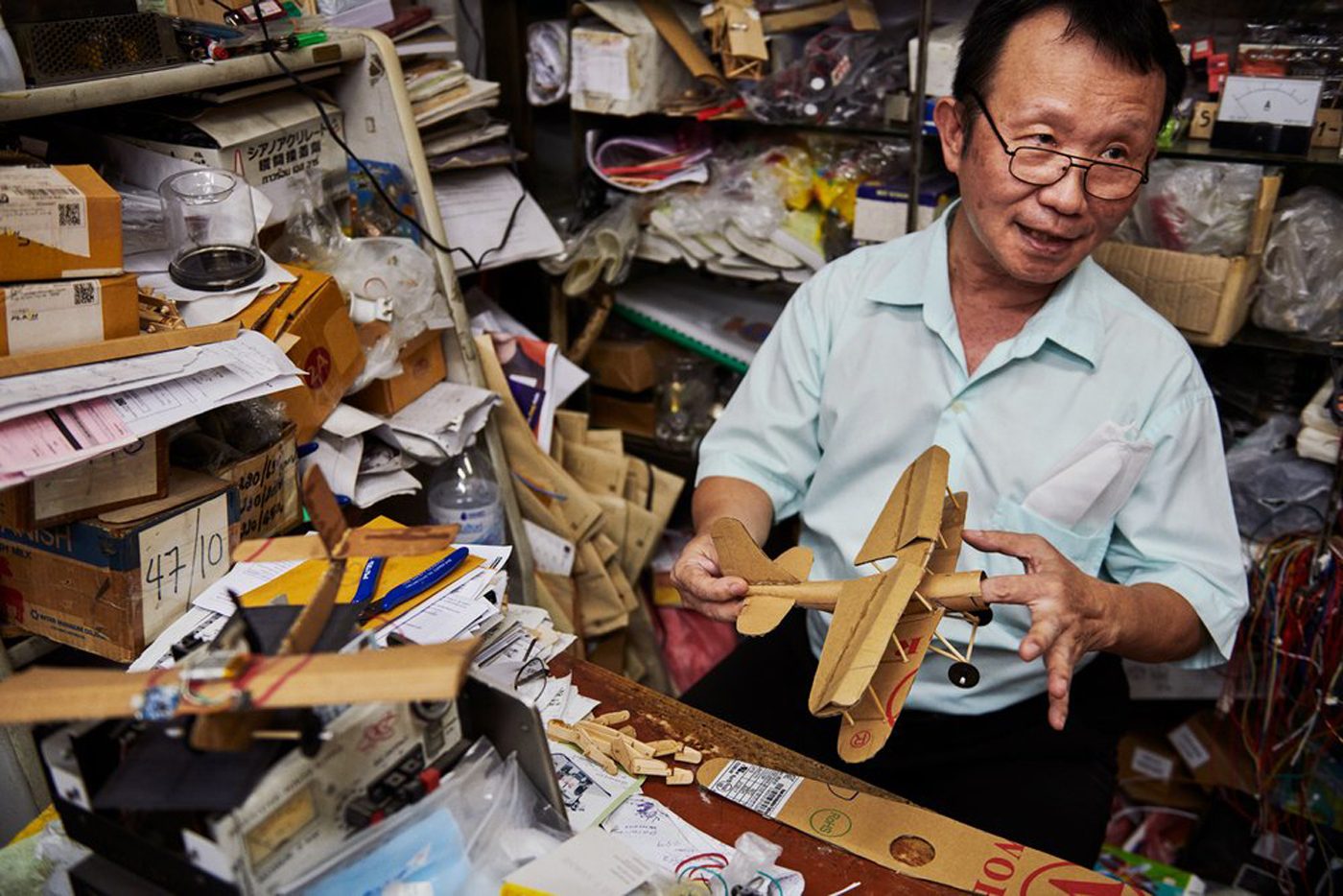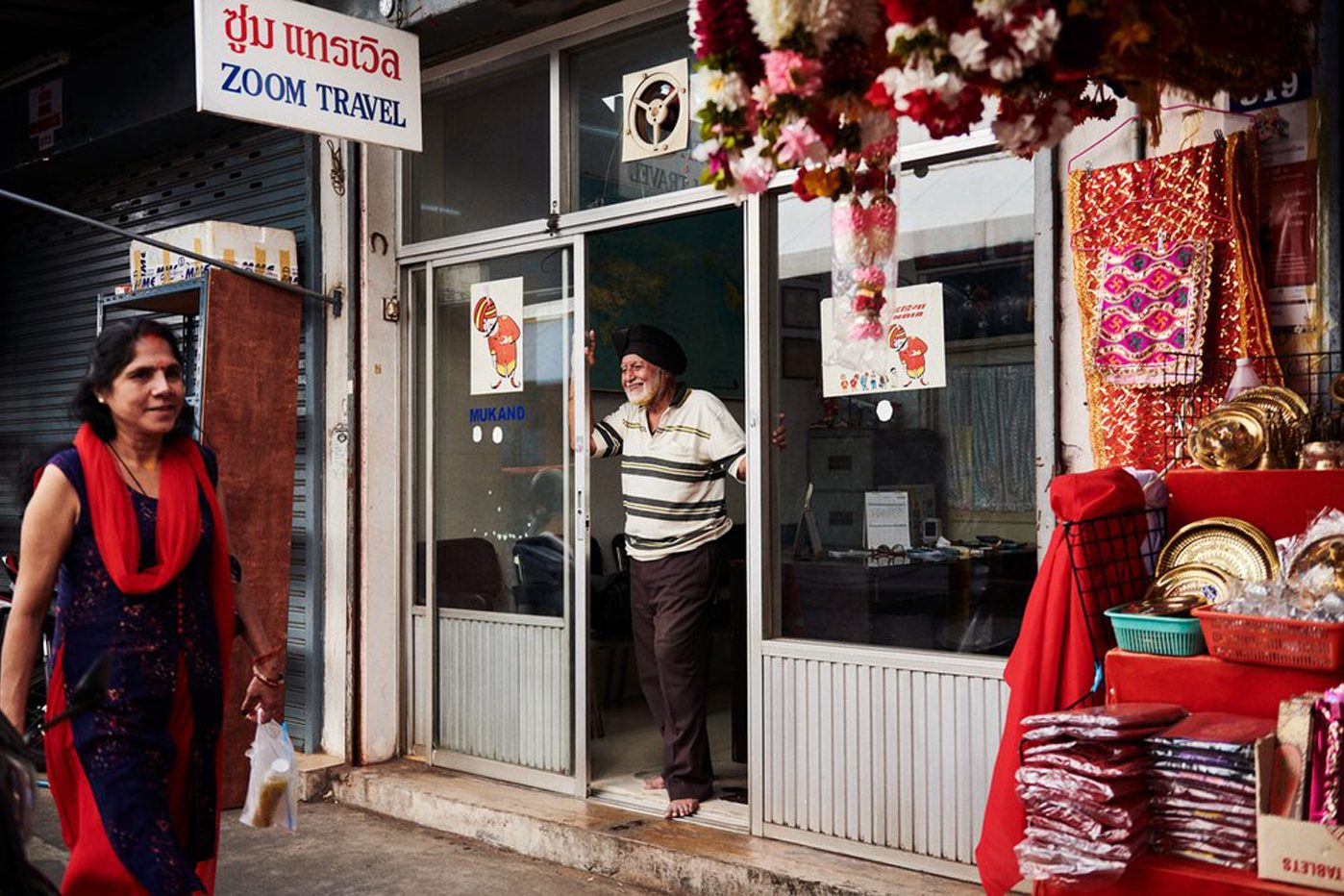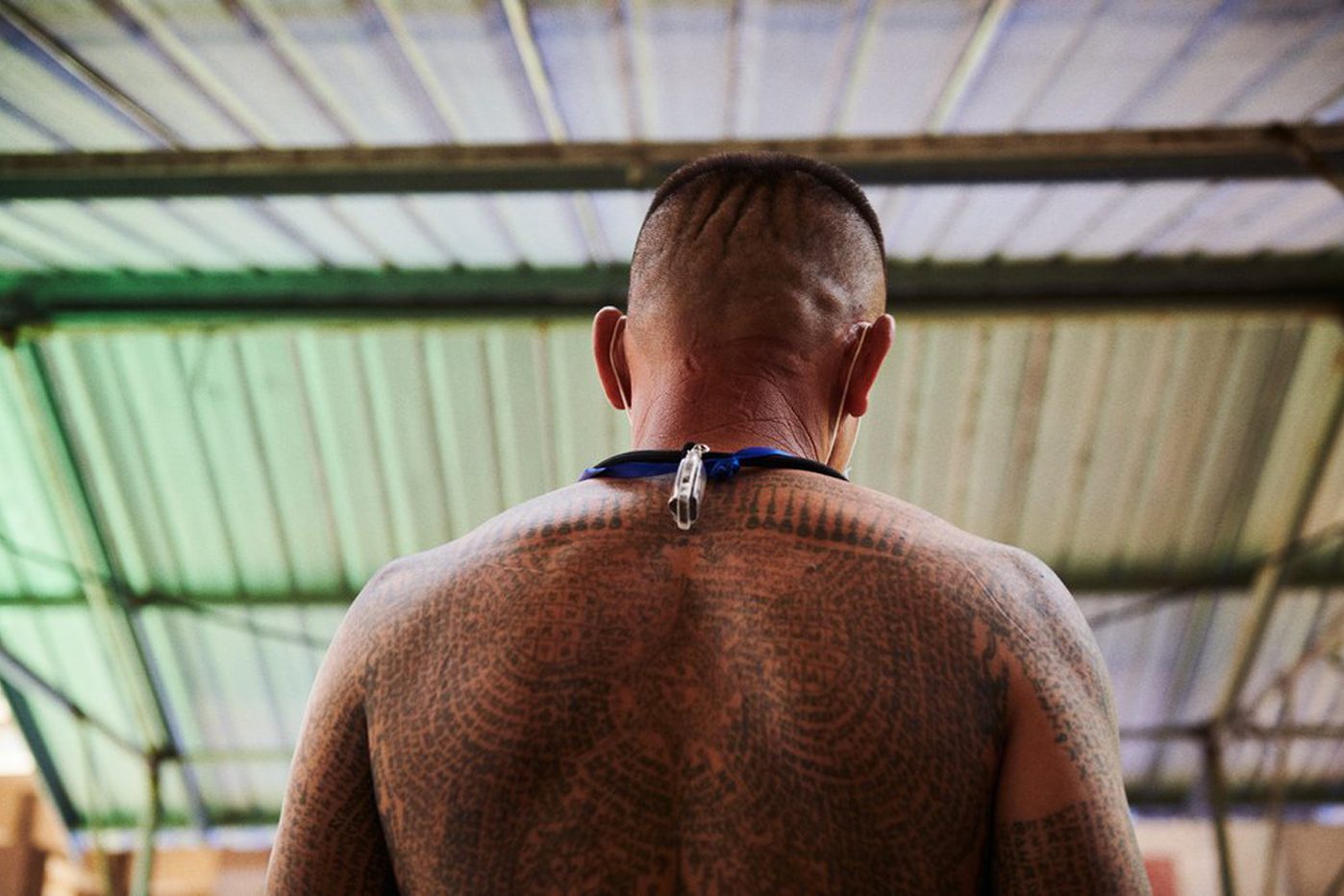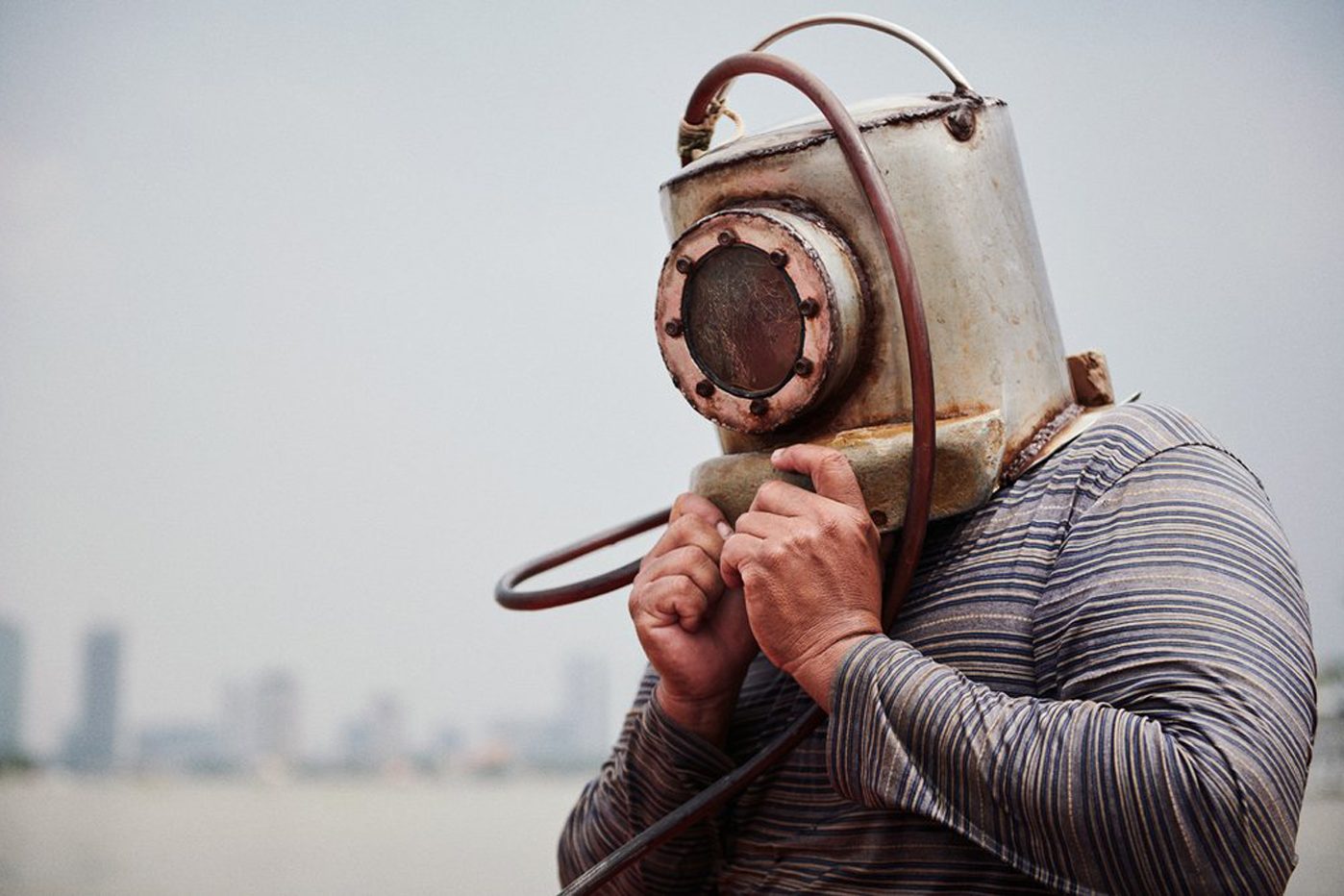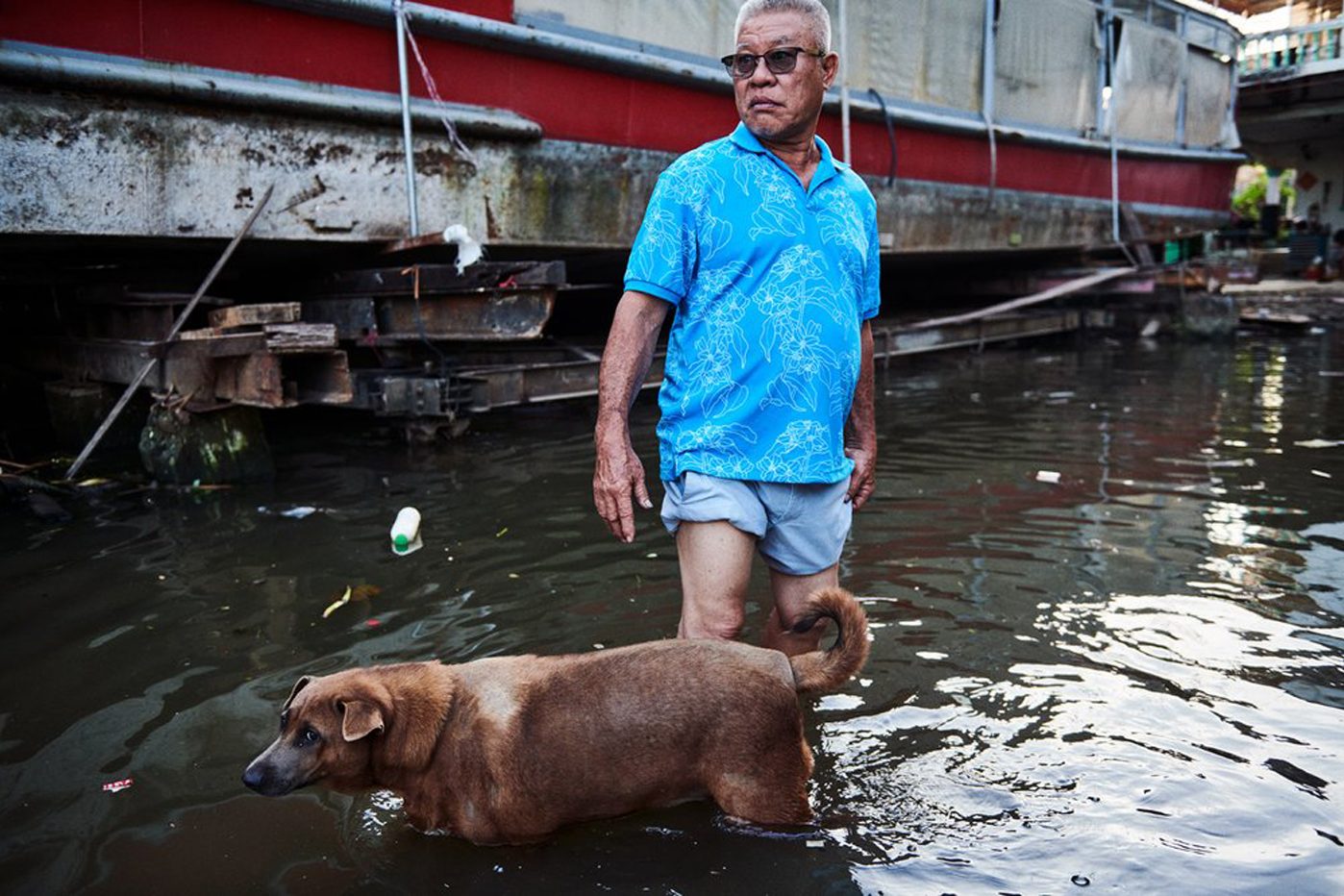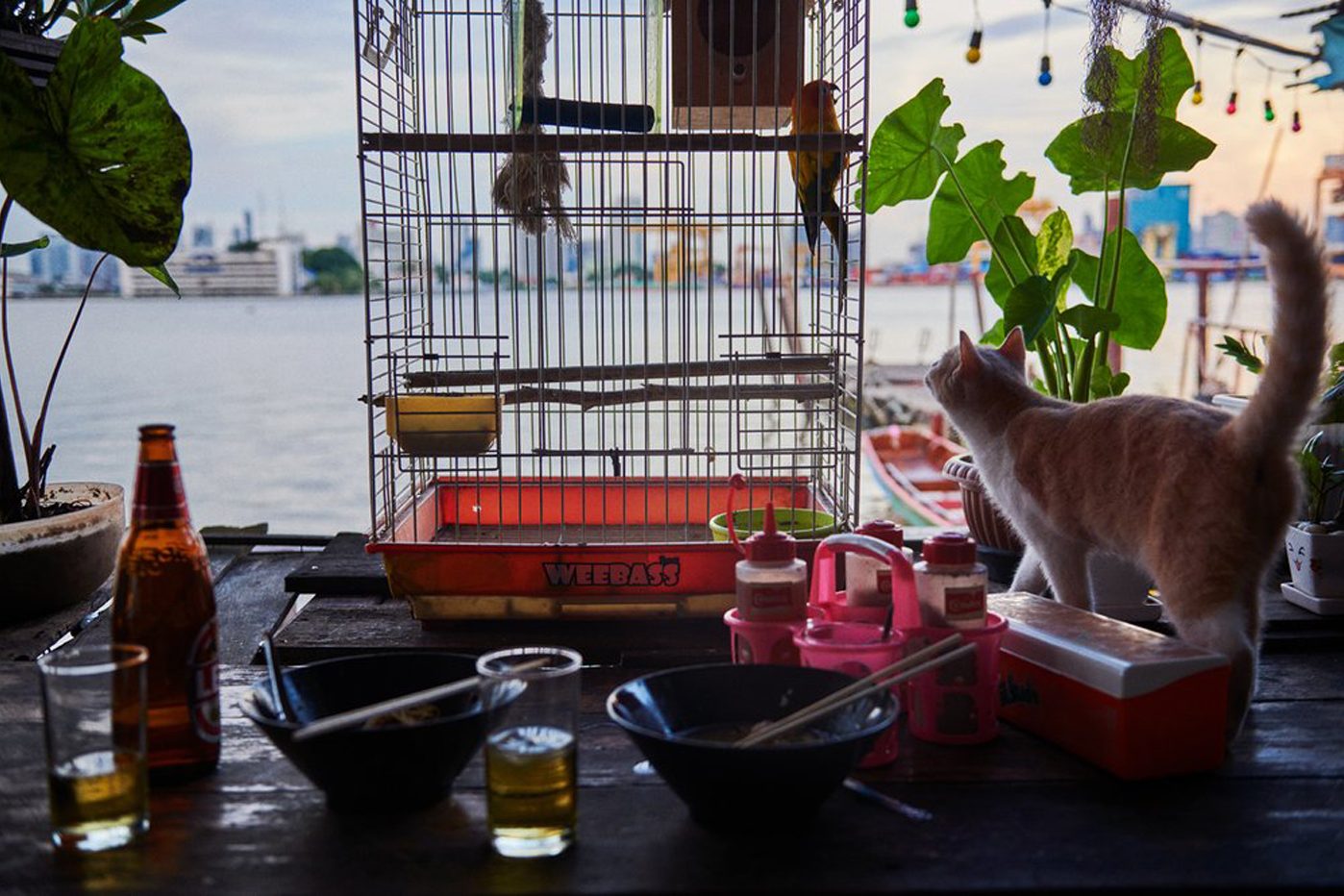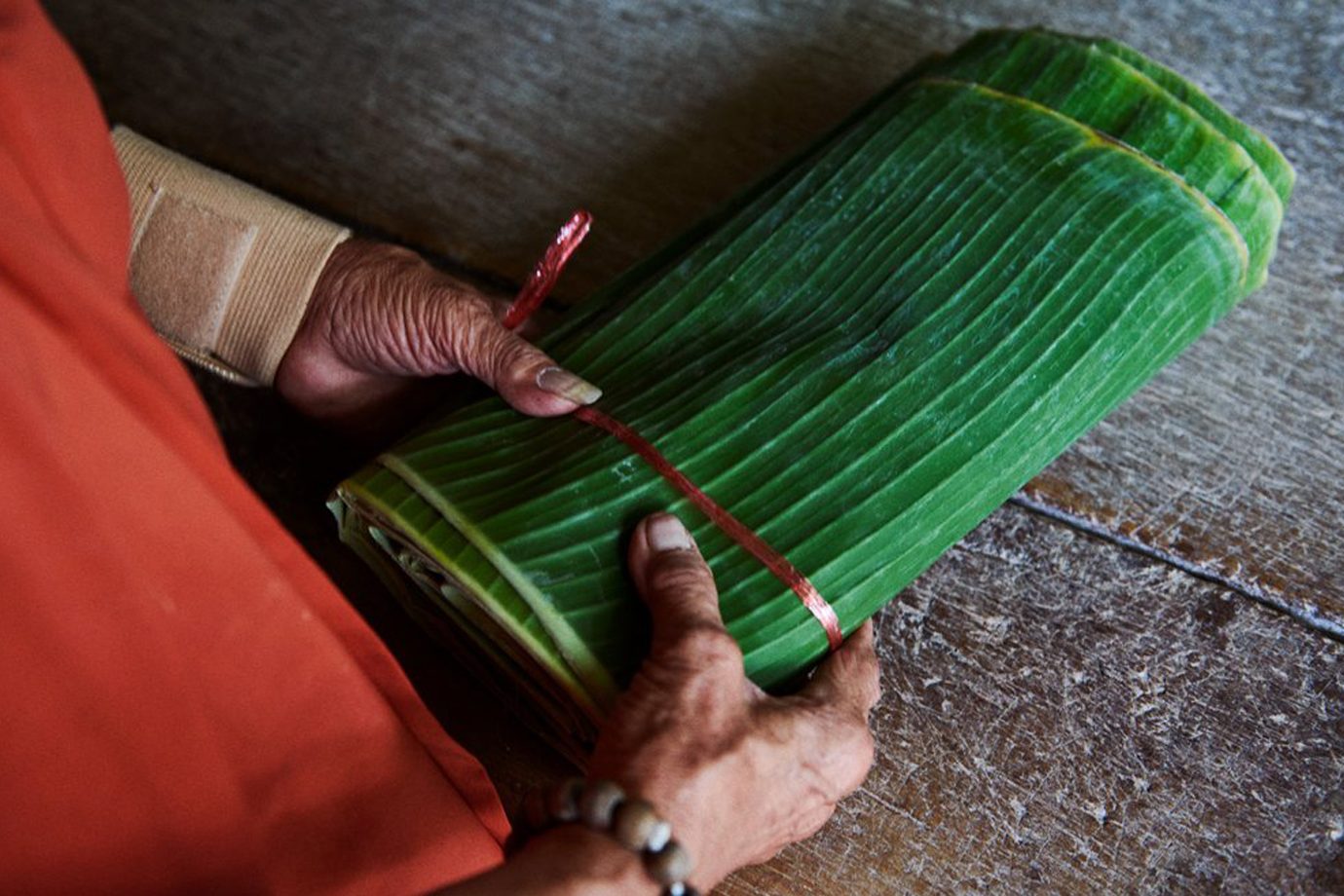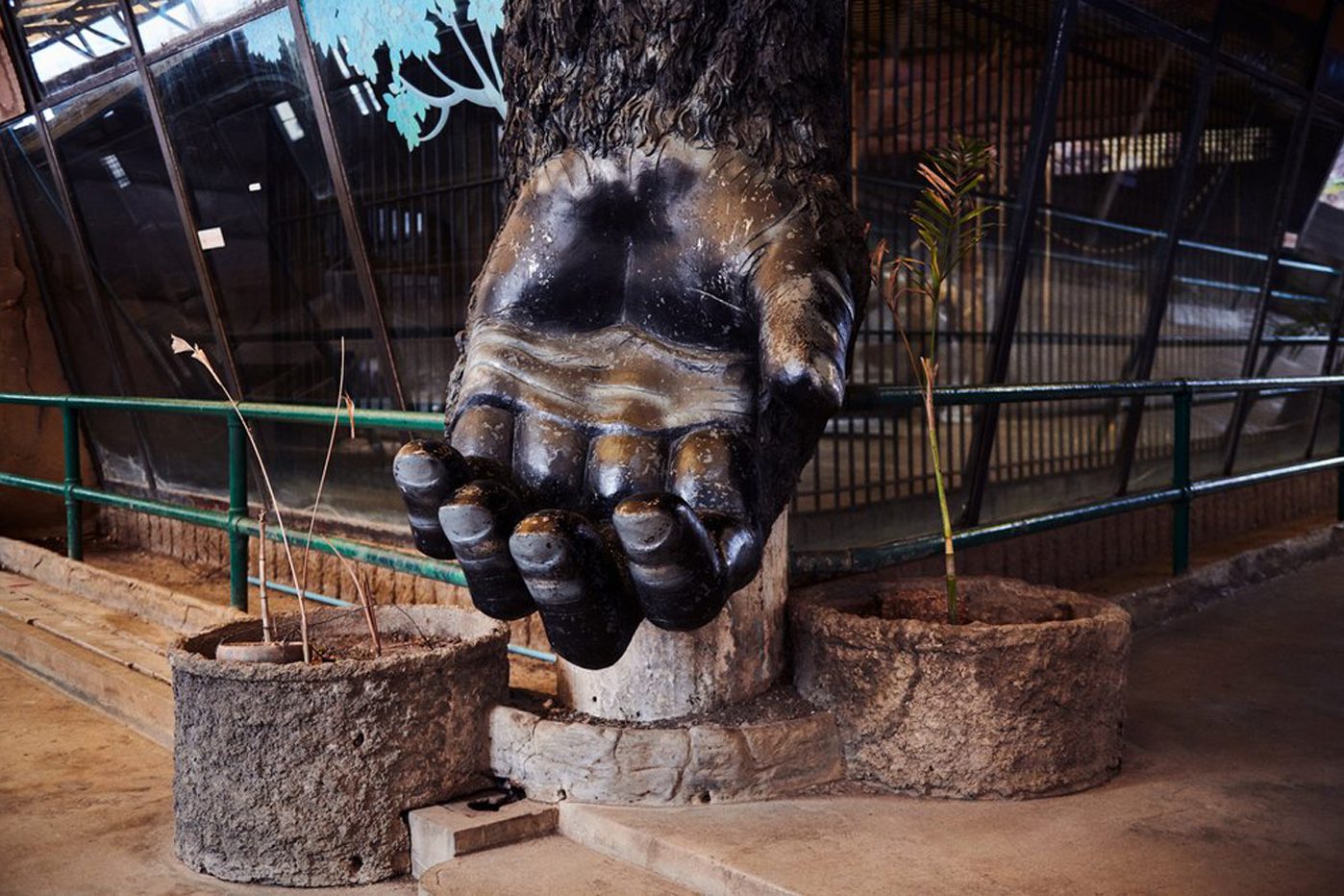Tag: bangkok
PHOTO ESSAY : THE CITY’S COLORS: BANGKOK
TEXT & PHOTO: JULACHART PLEANSANIT
(For Thai, press here)
Bangkok stands out as one of the most fun cities in the world, well-known for its rich cultural mix and vibrant environment. A key element that sets Bangkok apart is its explosion of color, which defines the city’s unique character both day and night.
Color in Bangkok is not just a detail; it plays a crucial role in shaping the city’s atmosphere and identity. The city’s bright colors are evident everywhere, such as advertising signs, street fabric, colorful vehicles, fashion, buildings, and its people. Red, yellow, and blue are among the most prominent, popping up everywhere throughout the city, along with many other exceptional colors.
In street photography, color becomes one of the first elements I look for. It can create a visually striking photo when combined with the right composition. Vibrant colors can also make for a more interesting storytelling narrative in the shot.
This set of photographs shows a striking color scheme while capturing the unique quality of Thainess. Each image reflects how Bangkok’s colors contribute to its lively street scenes and cultural identity, offering a glimpse into the city’s soul through its colorful environment.
___________________
Julachart Pleansanit, Bob, is an event designer based in Bangkok. About a year ago, he took up street photography as a serious hobby. Since then, he’s been capturing the streets of Bangkok through his own perspective. He believes that every street has its own uniqueness. It’s like a treasure hunt for him, in which he tries to find the hidden gems that are hiding in plain sight.
BANGKOK UTOPIA: MODERN ARCHITECTURE AND BUDDHIST FELICITIES, 1910 – 1973
LAWRENCE CHUA’S BOOK NARRATES MODERN ARCHITECTURAL HISTORY AND URBAN ENVIRONMENT WHICH IS BASED ON BUDDHIST BELIEFS DURING 1910 – 1973
4TH WALL
TASTE SPACE DESIGNED A BAR TO DISPLAY A CONCEPT ‘RETRO-FUTURISM’ WHICH CAPTURES THE VITAL COMPONENTS FROM 1960S CINEMA FOLLOWING THE OWNER’S PASSION
PHOTO ESSAY : WAT ARUN
TEXT & PHOTO: TANAGON TIPPRASERT
(For Thai, press here)
From ancient times to the present, Wat Arun Ratchawararam, or the ‘Temple of Dawn,’ locally known as Wat Arun, remains a significant religious beacon and cultural destination, celebrated by both Thais and international visitors for the stunning beauty of its iconic Prang (spire). Yet, with every visit, a fresh perspective awaits discovery, complemented by the captivating surroundings that never fail to impress. A crucial element that adds delight to exploring Wat Arun is the presence of tourists from around the globe, offering a novel outlook through their eyes. Enriching the experience, some visitors choose to don traditional Thai attire, transporting themselves back in time for an authentic glimpse into a bygone era. Even on exceptionally hot days, the joyous atmosphere prevails, with visitors reveling in the experience. Access to Wat Arun is conveniently facilitated by both road and boat services, ensuring a smooth journey for all visitors. This collection of images aims to present unique vantage points and special moments, inviting viewers to let their imaginations wander with the hope that the essence of Wat Arun, from past to present, will endure forevermore.
__________
Tanagon Tipprasert is a freelance photographer who specializes in wedding photography. He has a keen interest and passion for street and documentary photography.
EARLY YEARS PROJECT #7: A CHANGE IN THE PARADIGM
BANGKOK ART AND CULTURE CENTRE (BACC) HOLDS THE 7TH EARLY YEARS PROJECT EXHIBITION WHERE SEVERAL PROMISING ARTISTS SHOWCASE OUTSTANDING ARTWORKS REFLECTING THEIR VIEWS ON MODERN THAI SOCIETY
PHOTO ESSAY : BANGKOK ARCHIVE
TEXT & PHOTO: ULF SVANE
(For Thai, press here)
Bangkok Archive is a visual narrative of historic Bangkok. Driven by curiosity and a love for the city, we visit old, authentic places and talk to the people who keep these places alive. Due to rapid economic development, these places are constantly at threat of gentrification, relocation and closure. We consider ensuring a lasting memory of these places an urgent task.
As newcomers enter and new demands and habits emerge, with each passing year the city loses some of its distinct cultural-historical identity. With each refurbishment and demolition, the city’s décor is irreparably changed. At the same time, rising house prices in the city center push large segments of the population further out into the suburbs. Hand in hand with the relocation of people follows the departure of traditional businesses and small industries. Their way of life had set the standard for the environment and appearance of the city for decades. Traditional places to meet, eat, and drink with friends and family, or have your clothes washed or your haircut are at risk of disappearing.
We intend to ensure a memory of these places and the personal narratives that hide in plain sight. We wish to remember the city as it used to be and, through this, ask ourselves what kind of city we want to live in in the future. We want to question urban development and the political priorities on which it is based. We believe that the old places are an important part of Bangkok’s identity, worth fighting for and preserving so that new generations can get to know the city’s spirit and so reflect on its future.
Through these efforts, Bangkok Archive contributes to securing a significant and unique part of Bangkok’s cultural heritage for the future.
_____________
Ulf Svane, an award-winning visual storyteller from Copenhagen, Denmark, has gained widespread acclaim for his exceptional work. Specializing in capturing the tapestry of culture, people, and culinary experiences, he now divides his time between Copenhagen and Bangkok. Ulf’s work has been featured in respected publications such as Conde Nast Traveller, Travel + Leisure, National Geographic, Financial Times, and The Washington Post.
bkkarchive.com
ulfsvane.com
instagram.com/ulfsvane
LIGHT ROAST
MEET A VIRTUAL MEDIA CREATOR STUDIO FOUNDED IN BANGKOK WITH A KNACK FOR CREATING 3D VISUALS. THE FORMAT AND STYLE OF THEIR WORKS ARE FLEXIBLE DEPENDING ON DIFFERENT AND INTERESTING WAYS TO ADD VALUE TO EACH WORK
THAI-PAKISTAN FRIENDSHIP MOSQUE
‘THAI-PAKISTAN FRIENDSHIP MOSQUE’ BY TEECHALIT ARCHITECT IS A 5-STORY BUILDING THAT PROVIDES A MINIMALIST LOOK WHILE STILL ENCAPSULATING THE CHARACTERISTICS OF ISLAMIC ARCHITECTURE
ATELIER01

BANNPRU RESIDENCE




